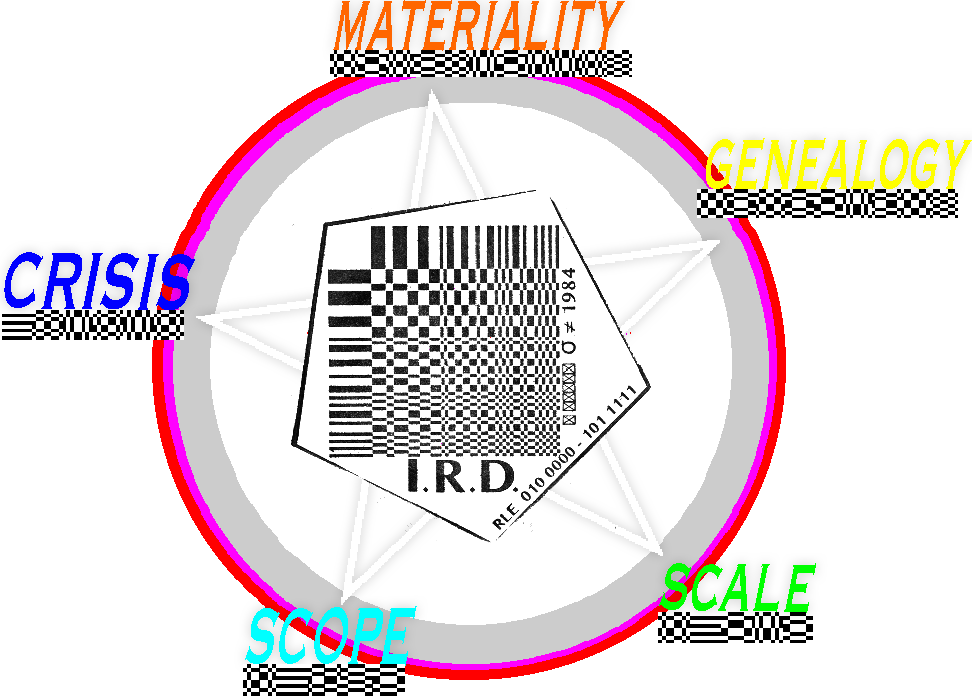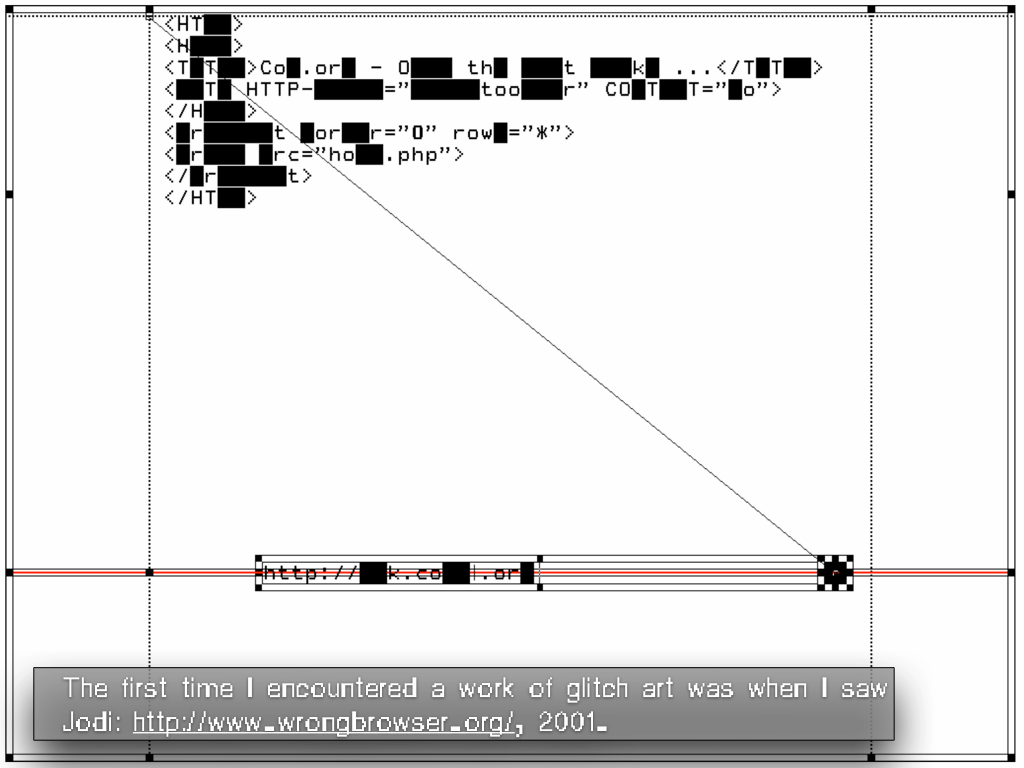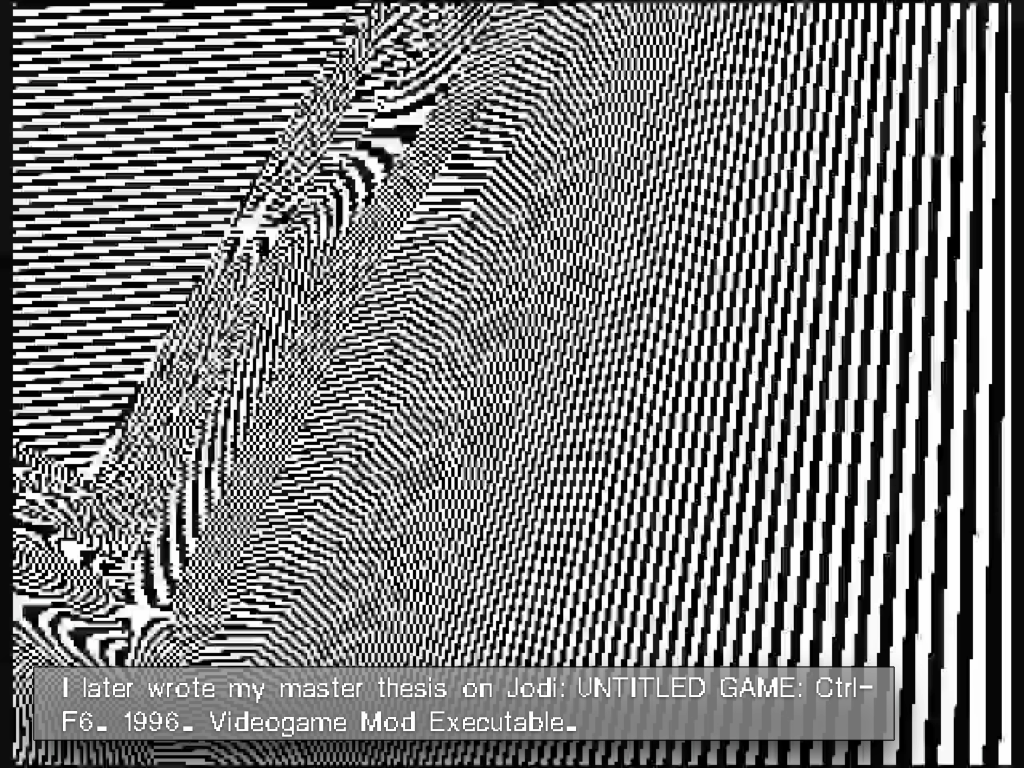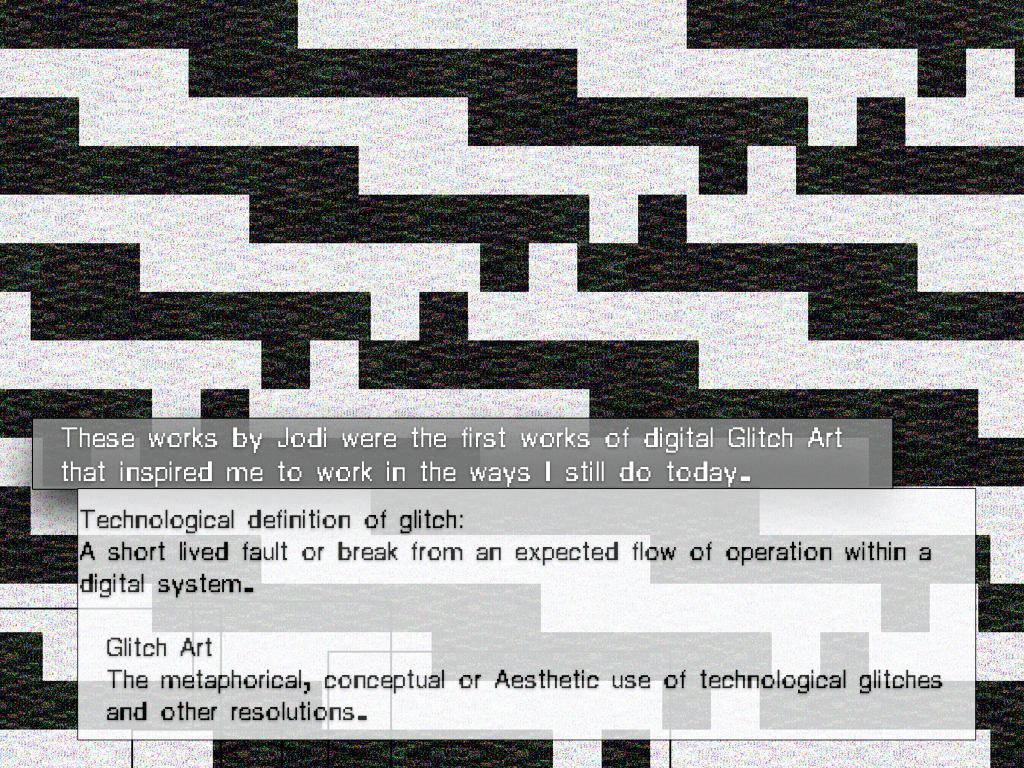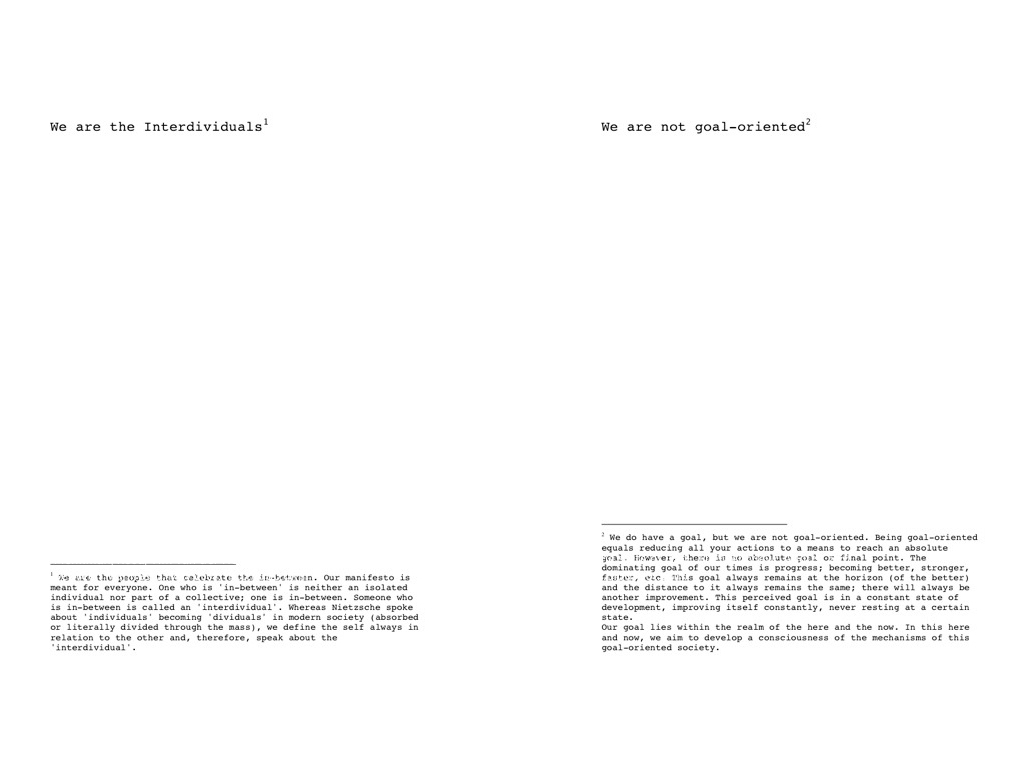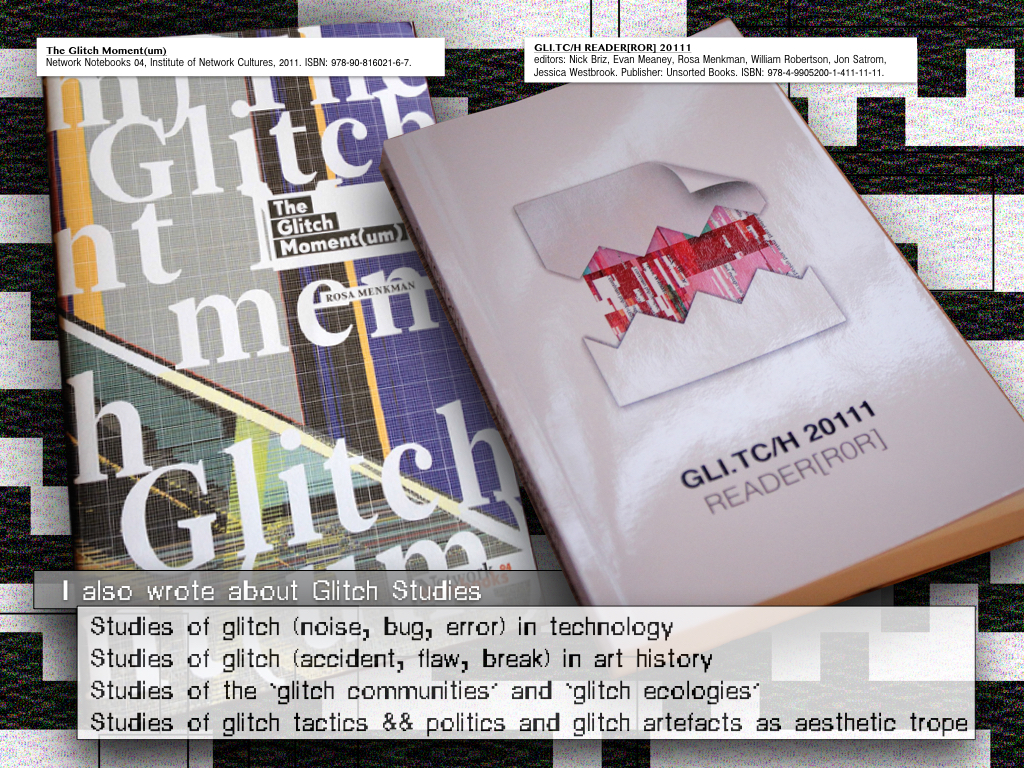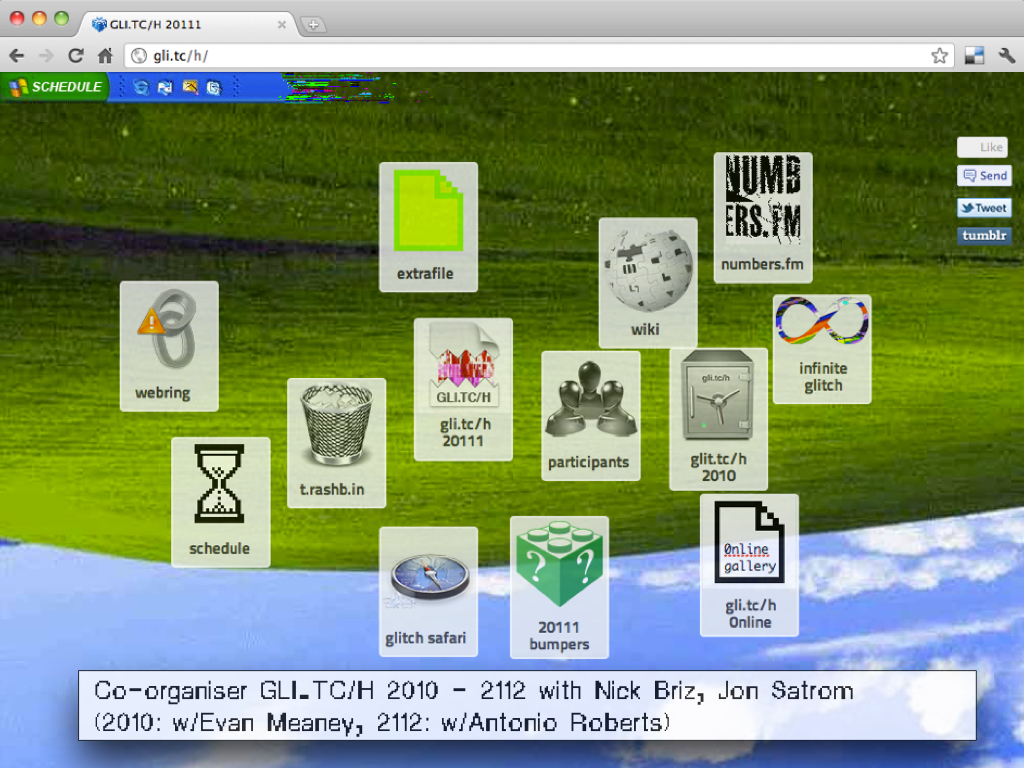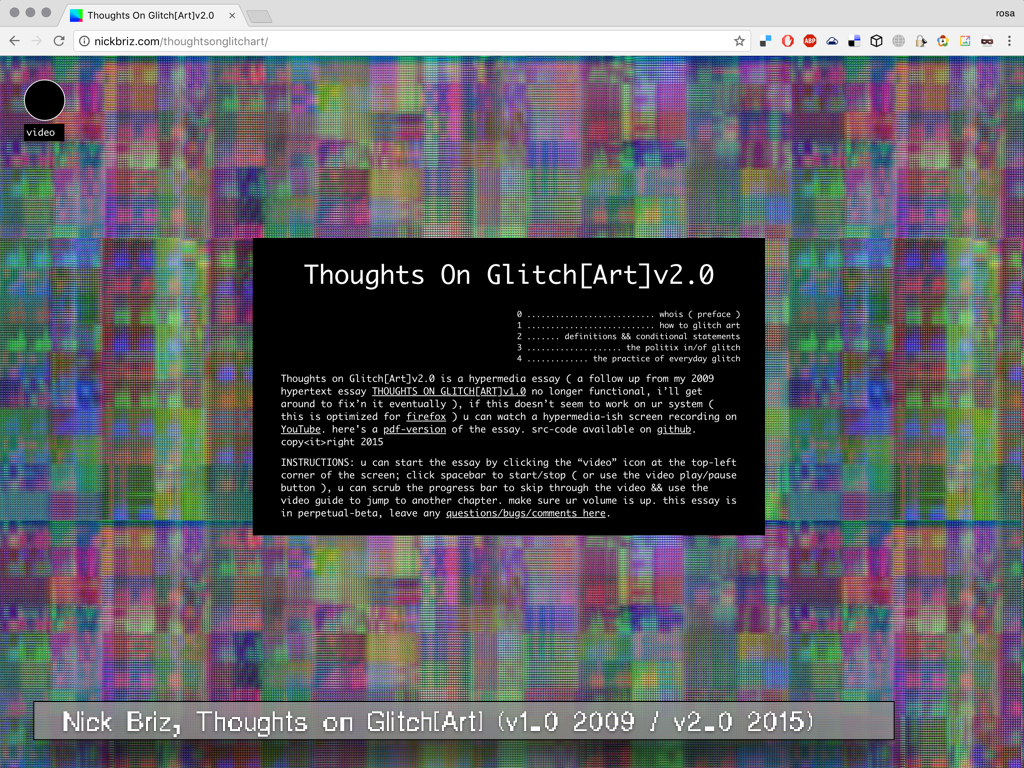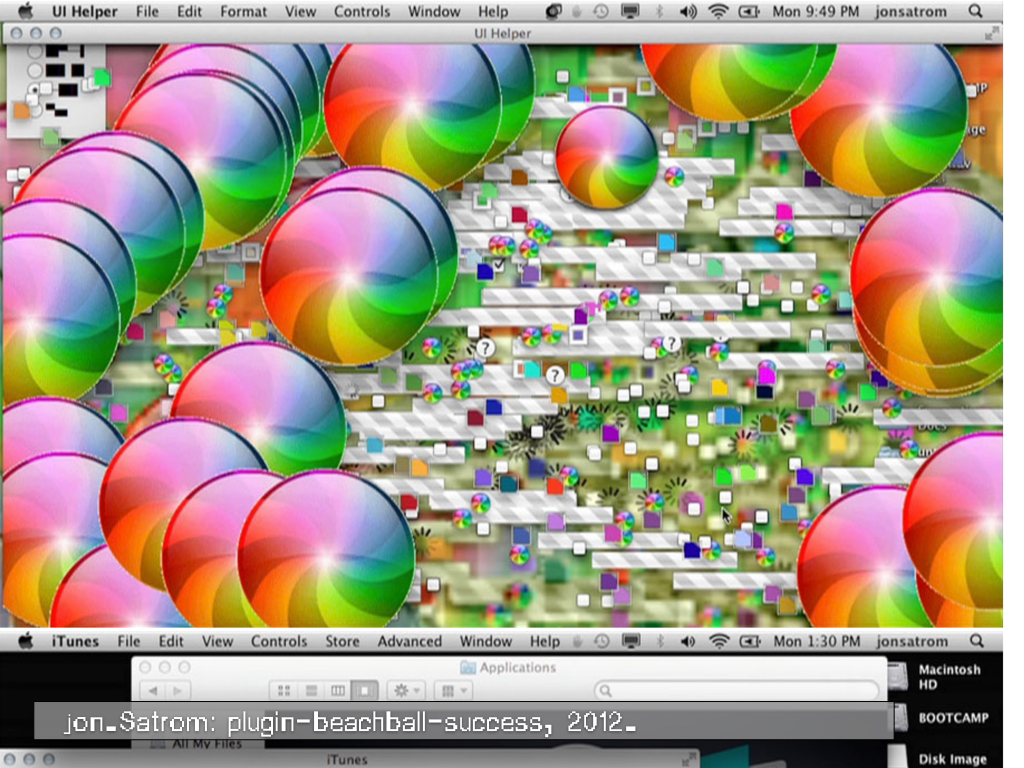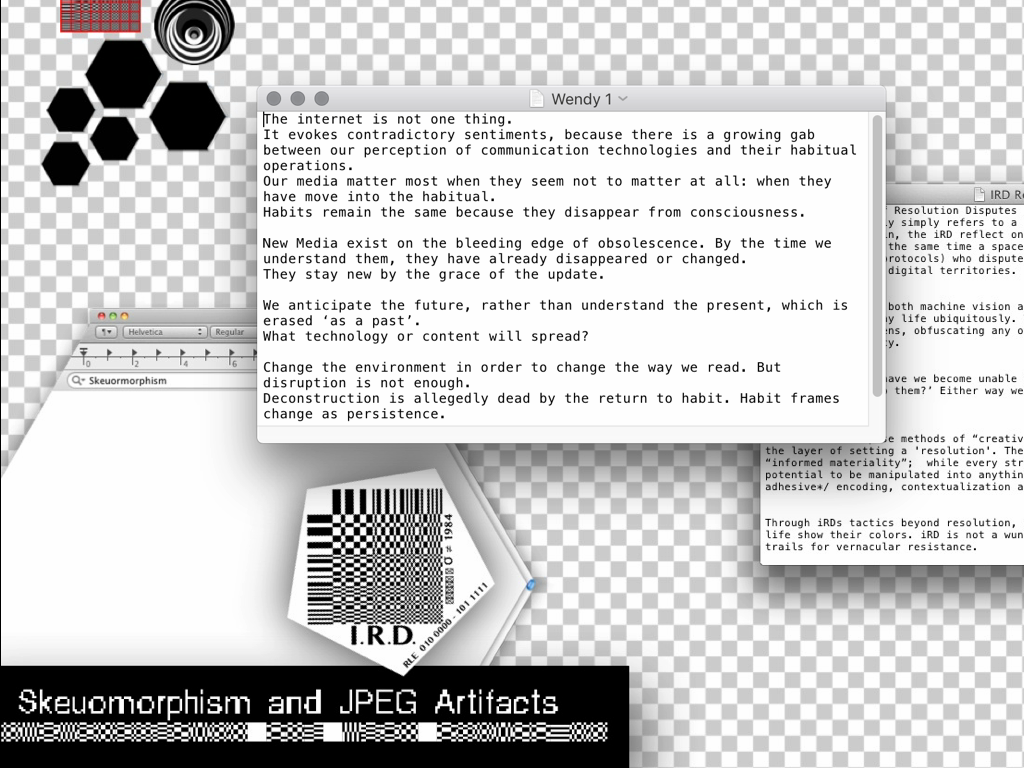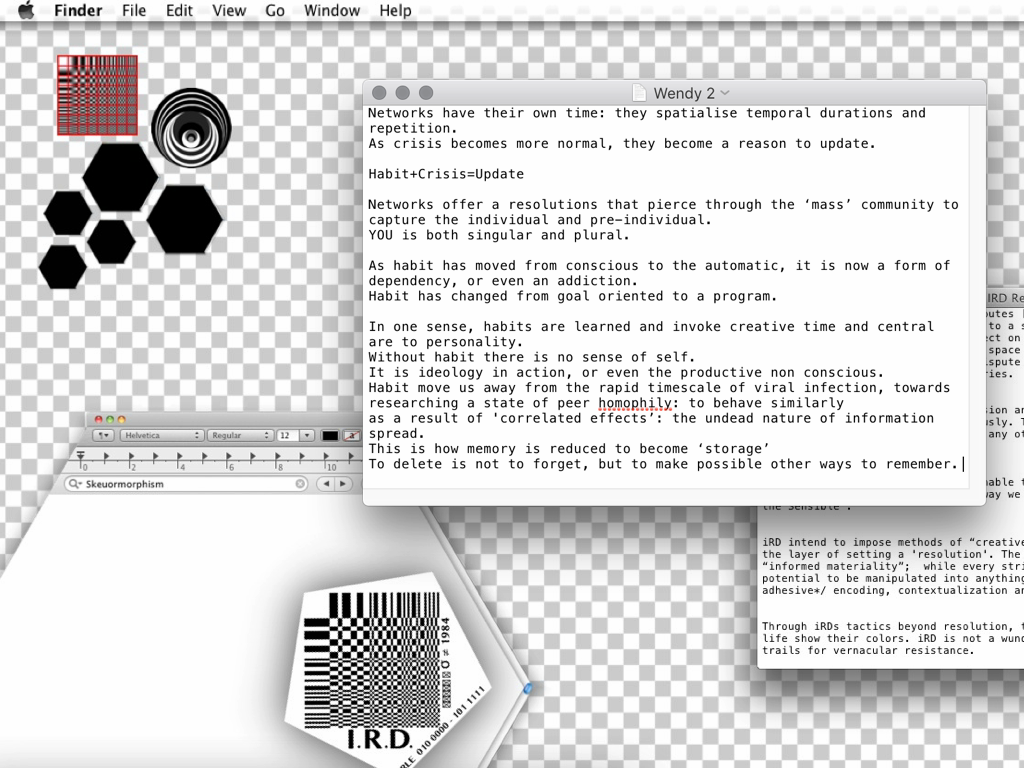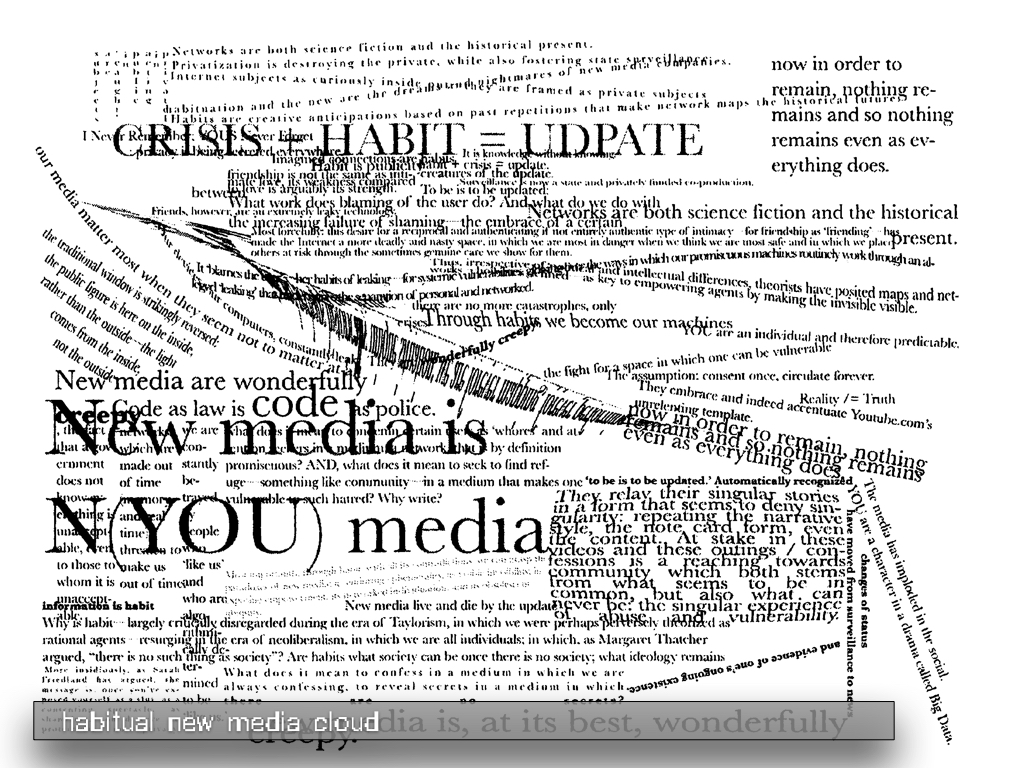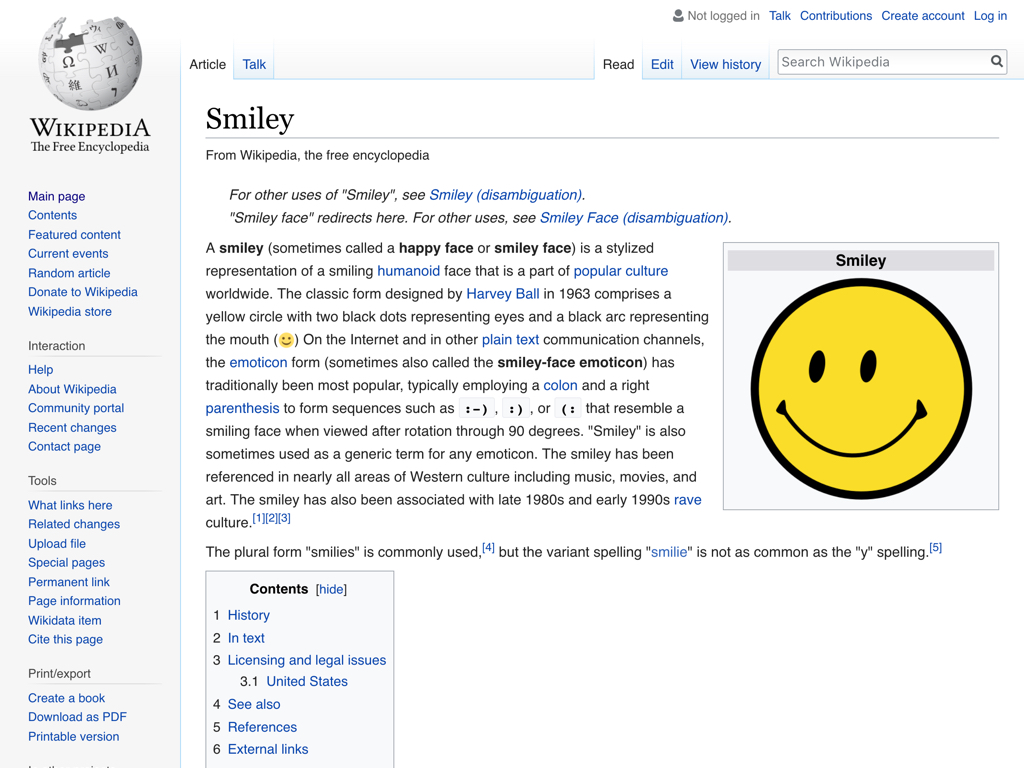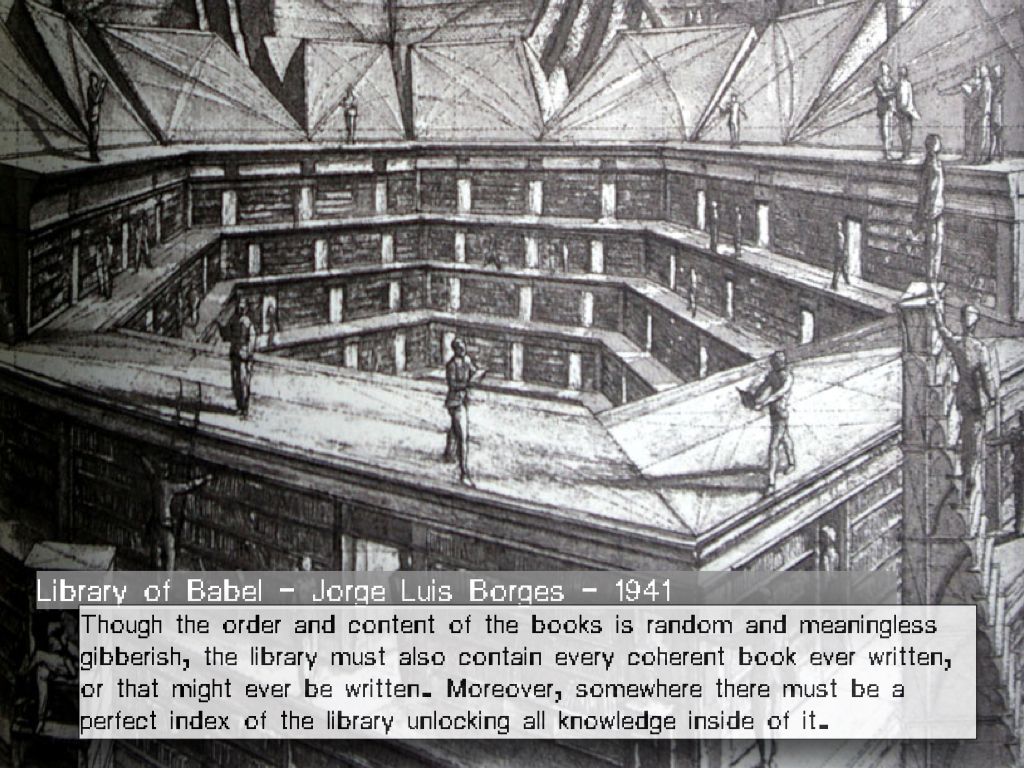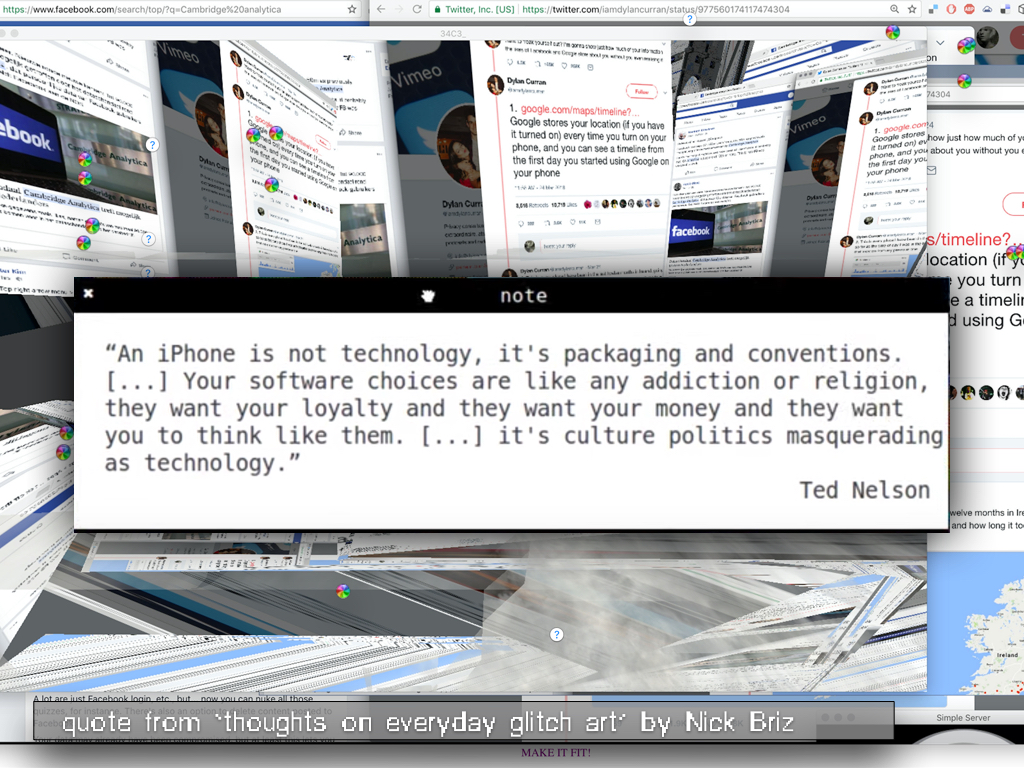0010 : SCOPE
Following the ideal logic of transparent immediacy, technology is designed in such a way that the user will forget about the presence of the medium. Generally, technology aims to offer an uninterrupted flow of functionality and information. This concept of flow is not just a trait of the machine, but also a feature of society as a whole, writes DeLanda.1 DeLanda distinguishes between chaotic disconnected flows and stable flows of matter, that move in continuous variations, conveying singularities. DeLanda also references Deleuze and Guattari, who describe flow in terms of the beliefs and desires that both stimulate and maintain society.2 Deleuze and Guattari write that a flow is something that comes into existence over long periods of time. Within these periods, conventions, customs and individual habits are established, while deviations tend to become rare occurrences and are often (mis)understood as accidents (or in computation: glitches). Although the meaningfulness of every day life might in fact be disclosed within these rare occurances, their impact or relevance is often ruled out, because of social tendencies to emphasize the norm.
To move beyond resolution also means to move beyond the habitual. One way to do this is by creating noise, for instance in the form of glitch: a short lived fault or break from an expected flow of operation within a (digital) system. The glitch is a puzzling, difficult to define and enchanting noise artifact; it reveals itself as accident, chaos or laceration and gives a glimpse into normally obfuscated machine language. Rather than creating the illusion of a transparent, well-working interface to information, the glitch can impose both technological and perceptual challenges to habitual and ideological conventions. It shows the machine revealing itself. Suddenly, the computer appears unconventionally deep, in contrast to the more banal, predictable, surface-level behaviors of ‘normal’ machines and systems.
To really understand the complexity of the user’s perceptual experience it is important to focus on these rare occurances - to create an awareness of the users habits by use of, for instance, the accident.
︎︎︎︎︎︎
1. Manuel DeLanda, War in the Age of Intelligent Machines, New York: Zone Books, 1991. p. 20.
2. Gilles Deleuze and Pierre-Félix Guattari, A Thousand Plateaus: Capitalism and Schizophrenia, Trans. B. Massumi, Londen: The Athlone Press, 1988. p. 219.
The slides underneath are from the New Media class ‘Beyond Resolution’ which I thaught as substitute professor at the KHK (Kassel) in the Sommer Semester of 2018. During this week we unpacked the term ‘Habitual Use’ via a research into various layers of standardization. The slides are clickable; they either link to the work reference or zoom.
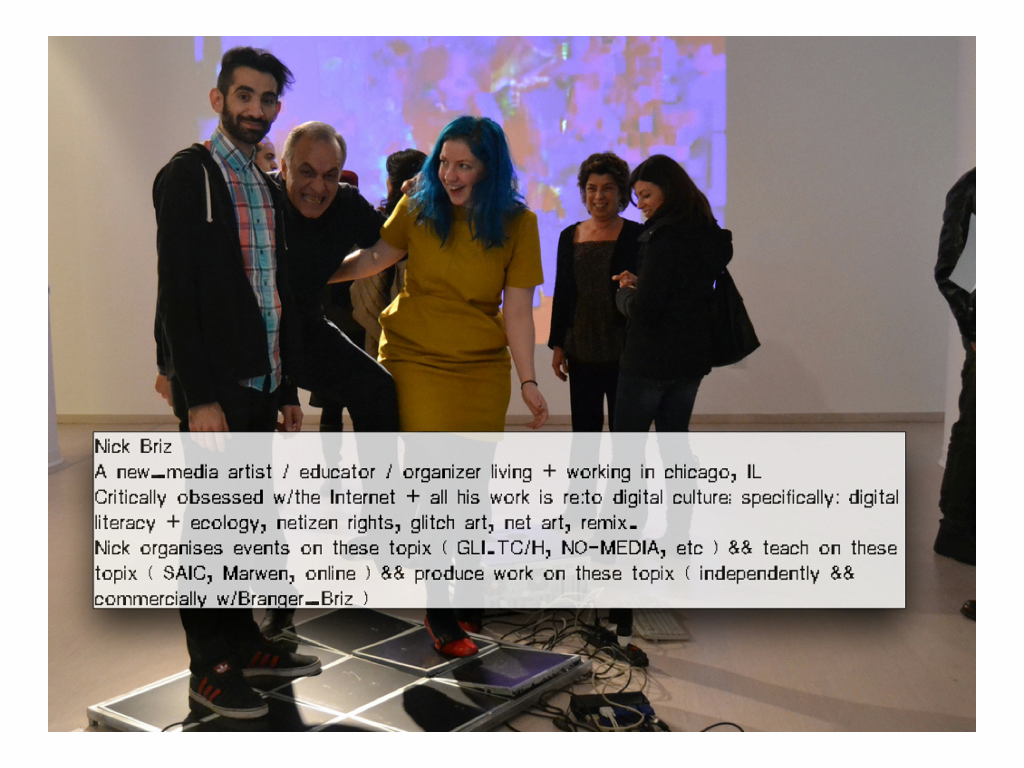
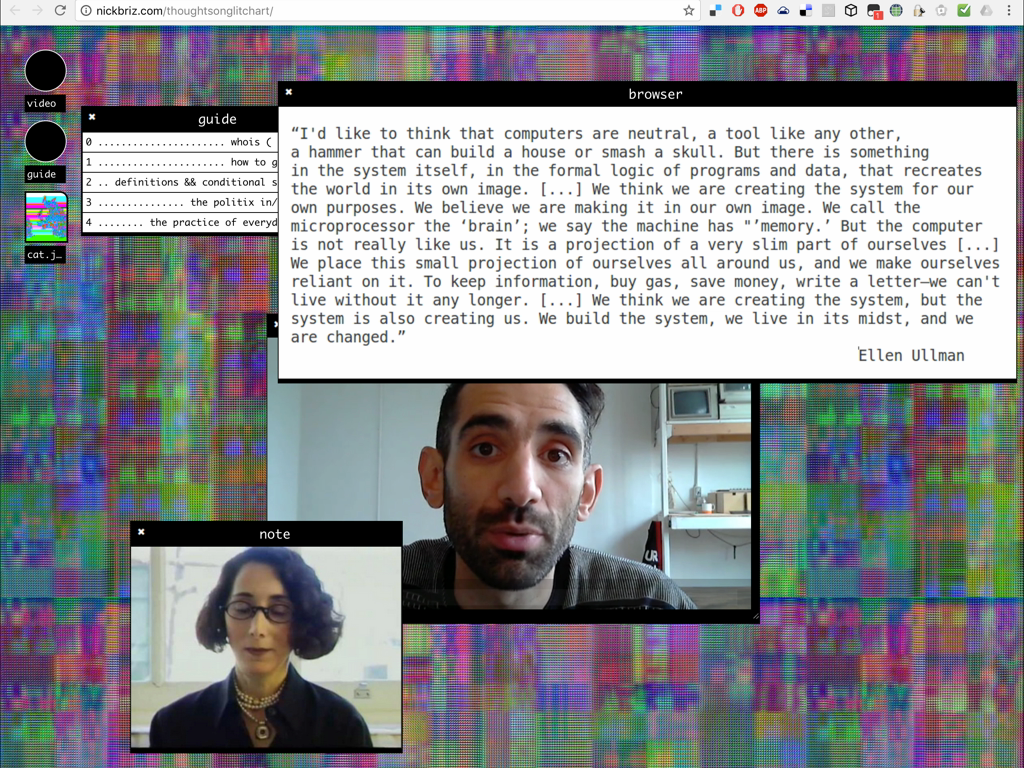
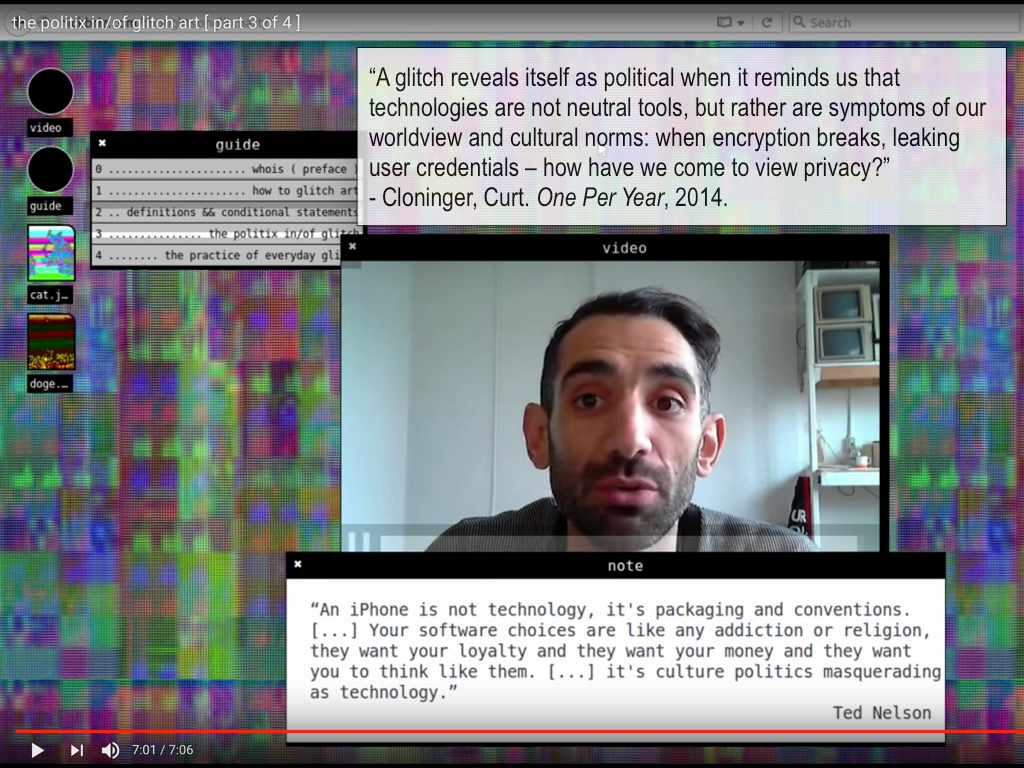

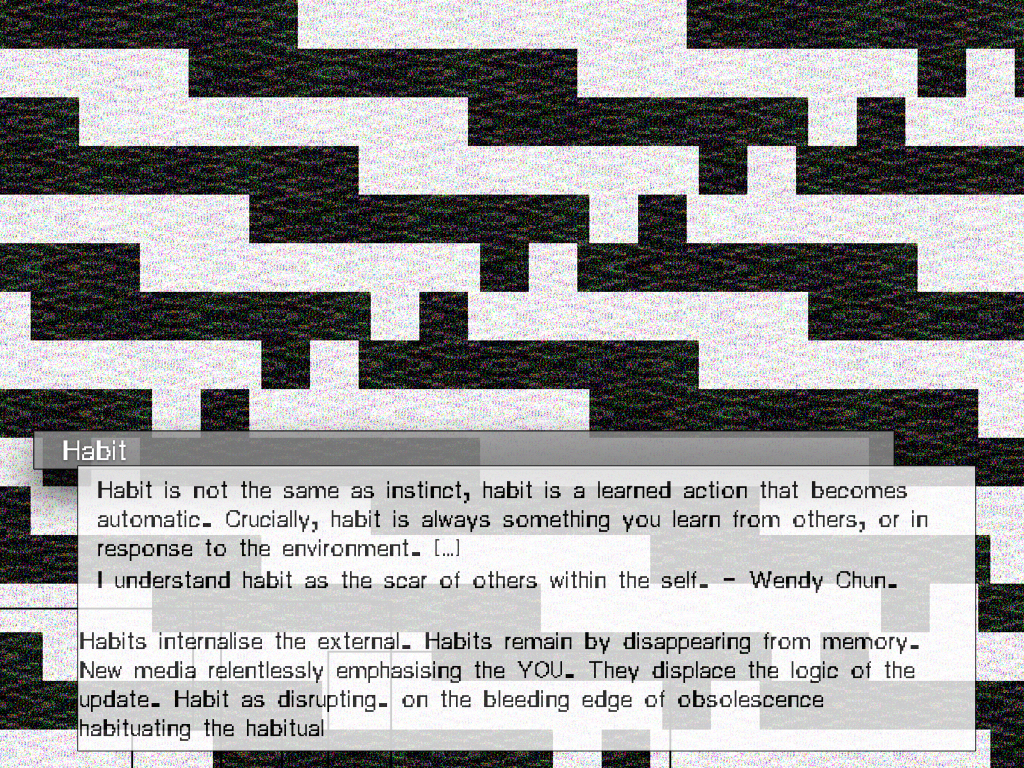
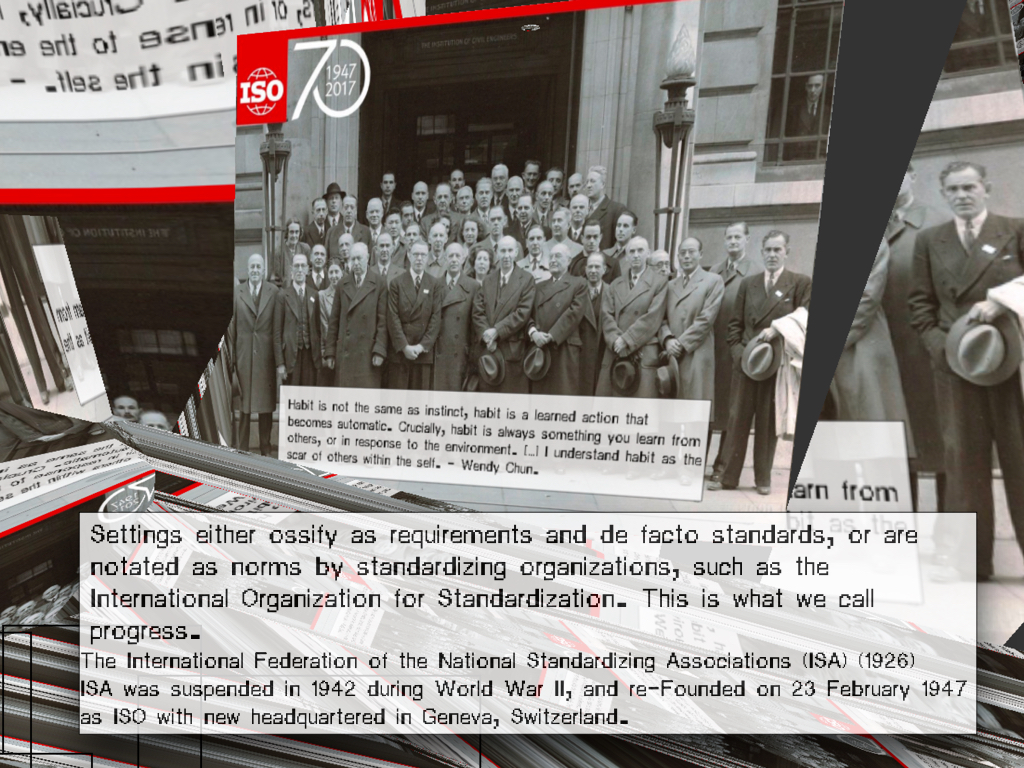
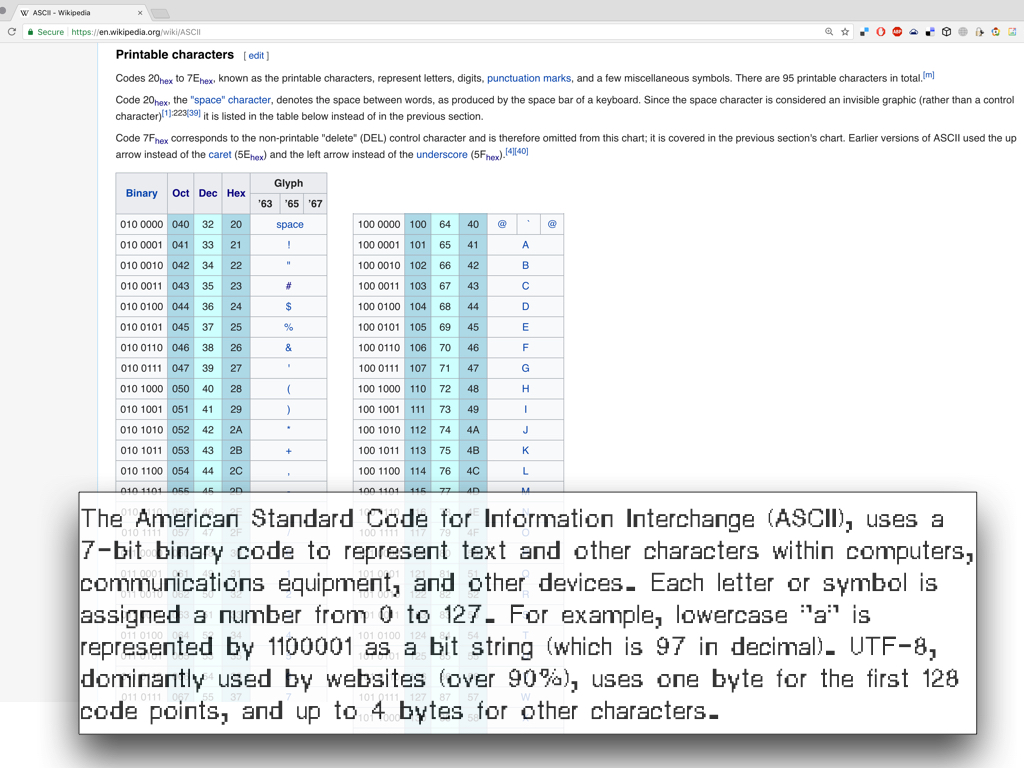
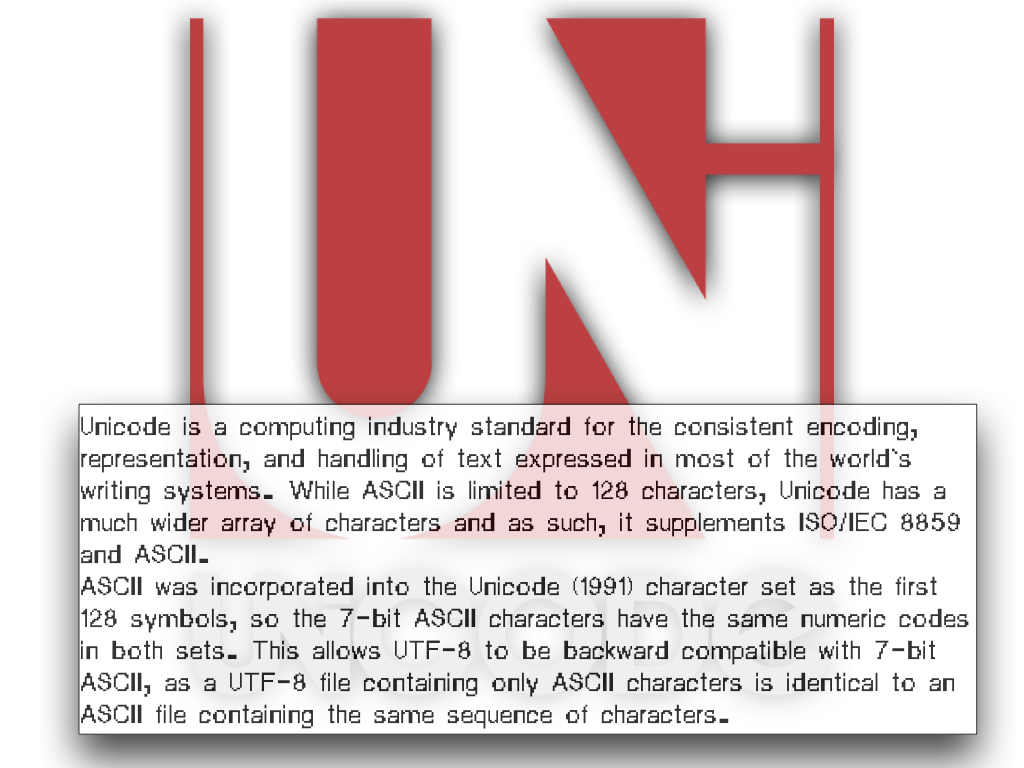
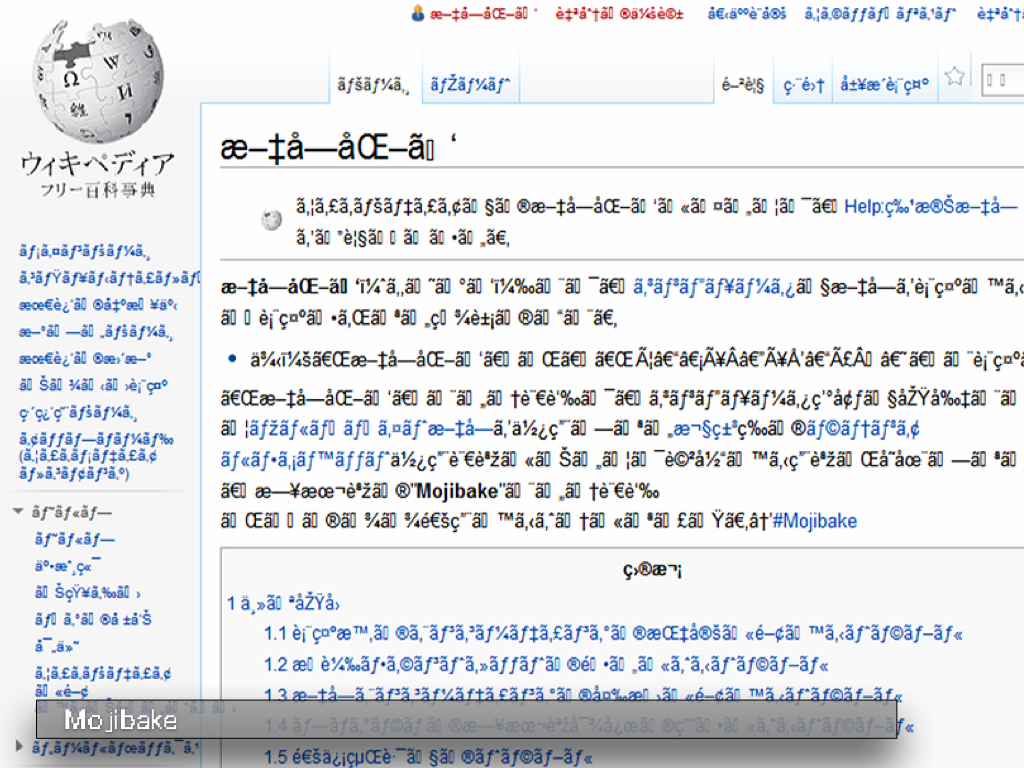
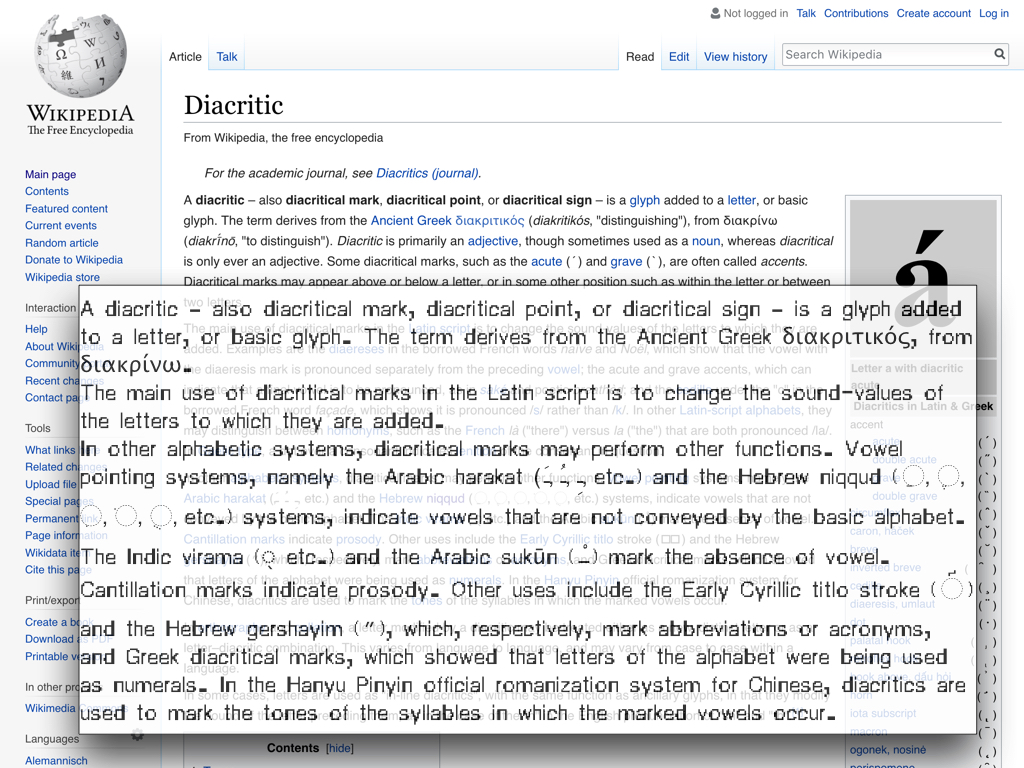
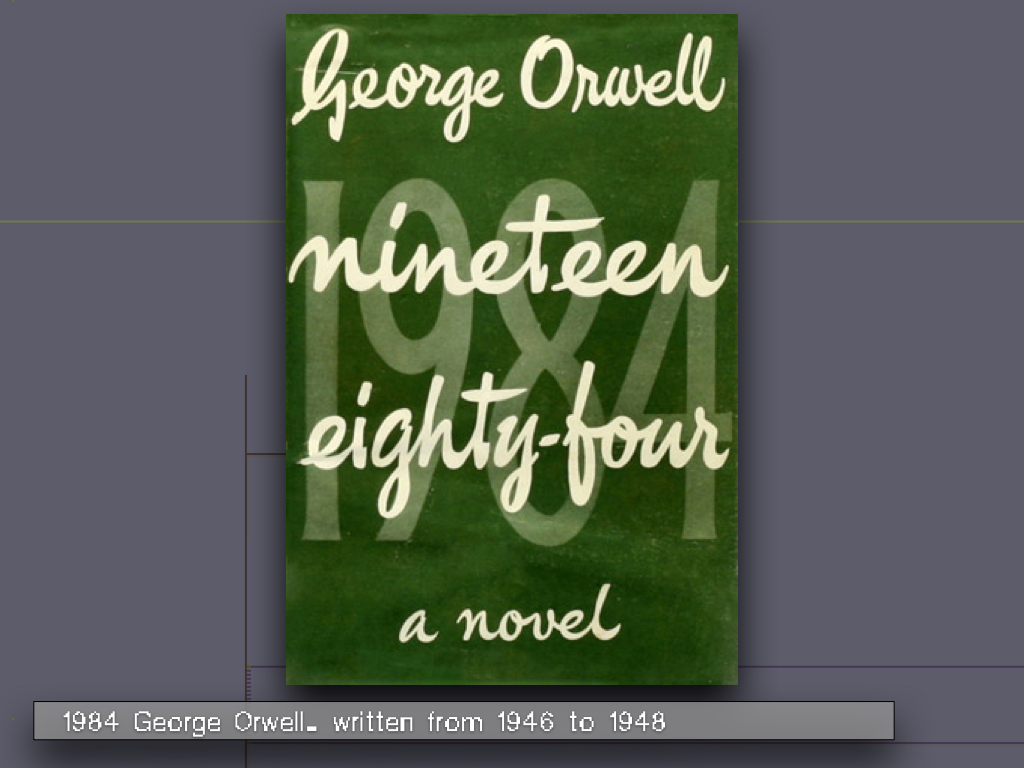
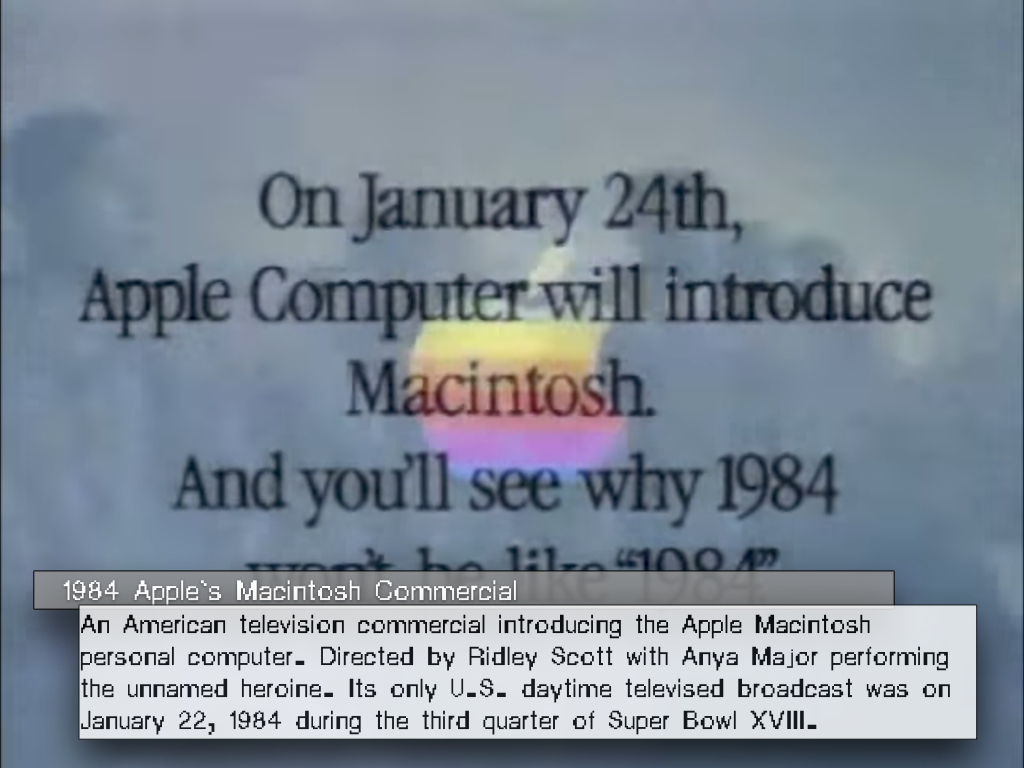
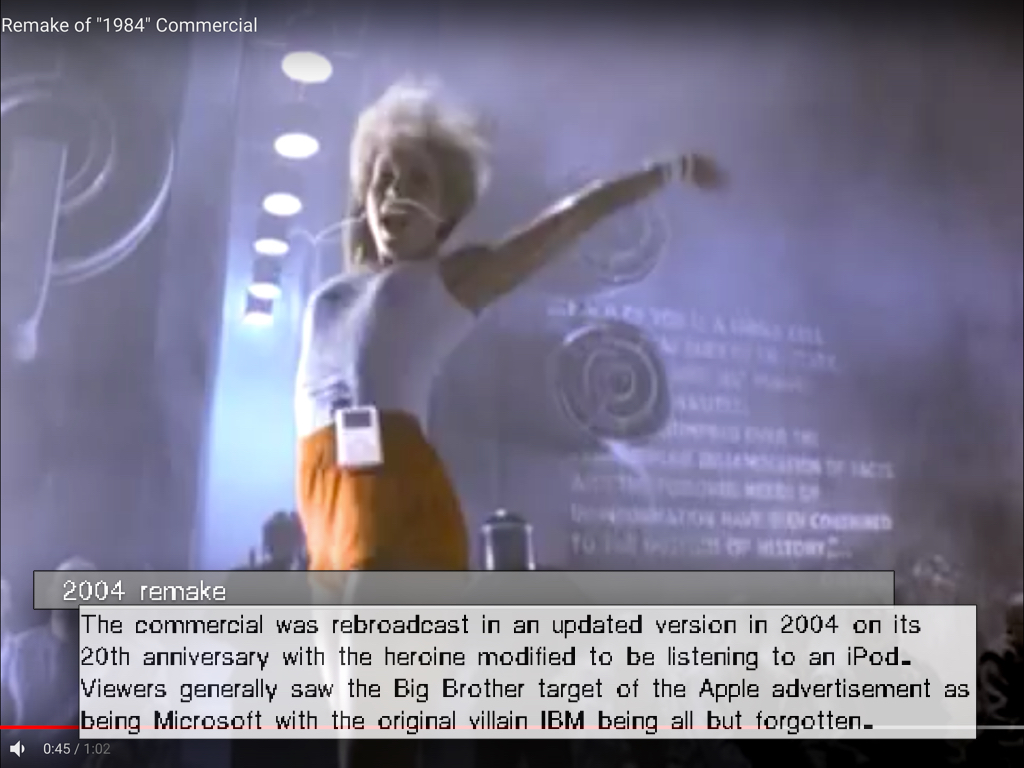
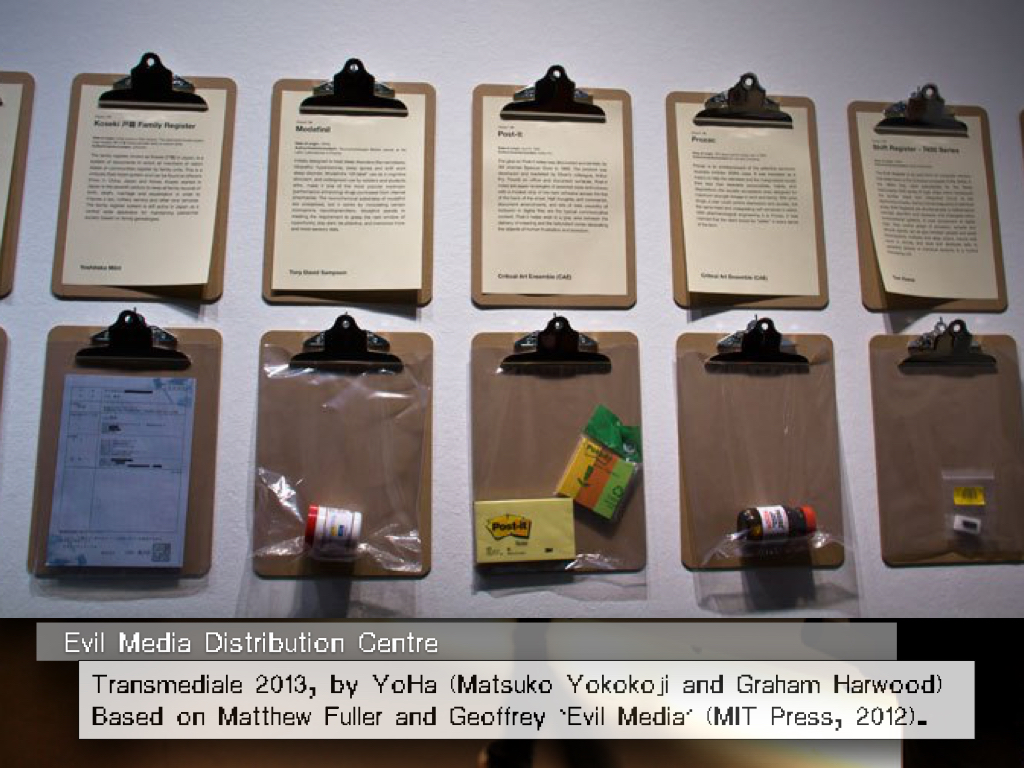
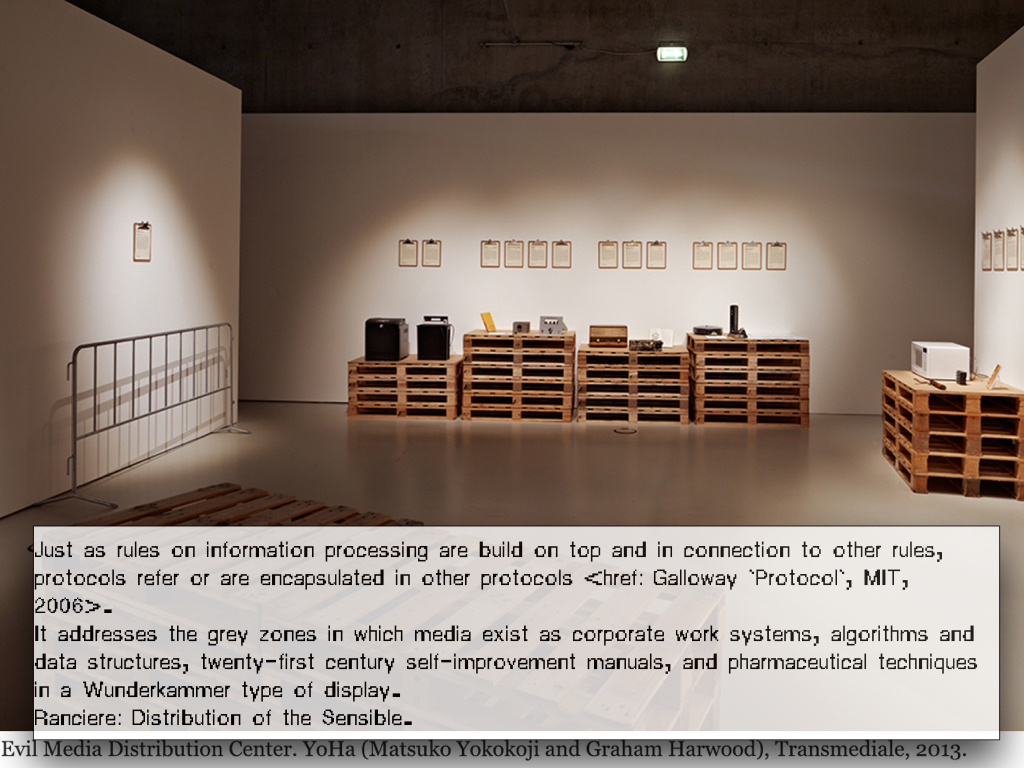
[︎]
Jodi on the Rack
[Jodi op de pijnbank]
Master thesis in Dutch (2006), supervised by Joost Bolten.
Introduction
In October 2005 I visited the World Wide Wrong, a solo show from the Dutch/Belgium artist collective Jodi (Jo for Joan Heemskerk and di for Dirk Paesmans) in Montevideo, the Institute for Media Arts in Amsterdam.
Untitled Game (Jodi, 1996) was one of the works on display. I immediately recognised the game Quake 1 (id software, 1996), of which Untitled Game is a collection of mods. At first, the confrontation with these mods was confusing, but after reading the texts that accompanied the exhibition, I understood the work better; my associations with the game Quake had mislead my first interpretations - I had let my previous experiences lead my reading of the work and Jodi had played with this habitual pattern of expectation.
This was my first experience with digital art that played with the norms and expectations of digital material. Untitled Game was an eye-opener. I realised there were new, changing and evolving differences not only between traditional ‘high art’ and contemporary, interactive ‘high art’, but also between art and entertainment. What intrigued me most, however, was that the work of Jodi, an art collective that does not follow any traditions, is still part of a canon of ‘high art’ and has won quite a few important prices!
The debate around art and the videogame industry has grown in intensity since the exhibition The Next Level in the Stedelijk Museum Centraal Station (SMCS). The exhibition got a lot of publicity and has been visited by both the game community as well as the normal museum crowd and received some critical feedback from both sides. Merel Roze wrote a critical piece titled ‘Games = Art’. From this piece it seemed like the question if a popular mass medium belongs to the space of the contemporary museum is again relevant.
These developments made me think more deeply about the medium of Untitled Game - the computergame; how does this technology actually work, and how does the medium in which the work is disseminated and institutionalised (the internet, the museum and the art discourse) influence the (understanding of the) work. These are the questions I wish to analyse in this thesis. I am using the word analyse here in quite a literal way - I will take Untitled Game apart for a more close-up understanding, using the metaphor of a medieval ‘rack’; a technique used in torture - to force a subject to answer during questioning.
During this questioning of Jodi and Untitled Game, I will limit myself to five perspectives; in chapter one I will describe the art collective Jodi and the work. The following chapter I will dedicate to the difference and tension between high art and popular culture, to position Untitled Game within the perspective of critical theory. In the third chapter I will describe Untitled Game from an aesthetical point of view. Here I am not just using the classic, rather passive meaning of aesthetics, referring to passive contemplation, but also using the term in a more active form. In doing so, I wish to come back to a more philosophical meaning of the term esthetics. In the fourth chapter, I will describe Untitled Game from a technological and art historical point of view. Finally, in chapter five - I will describe the work as an ephemeral work of art.
︎ Jodi op de pijnbank (Dutch)
︎ bijlagen Jodi op de pijnbank (Dutch)
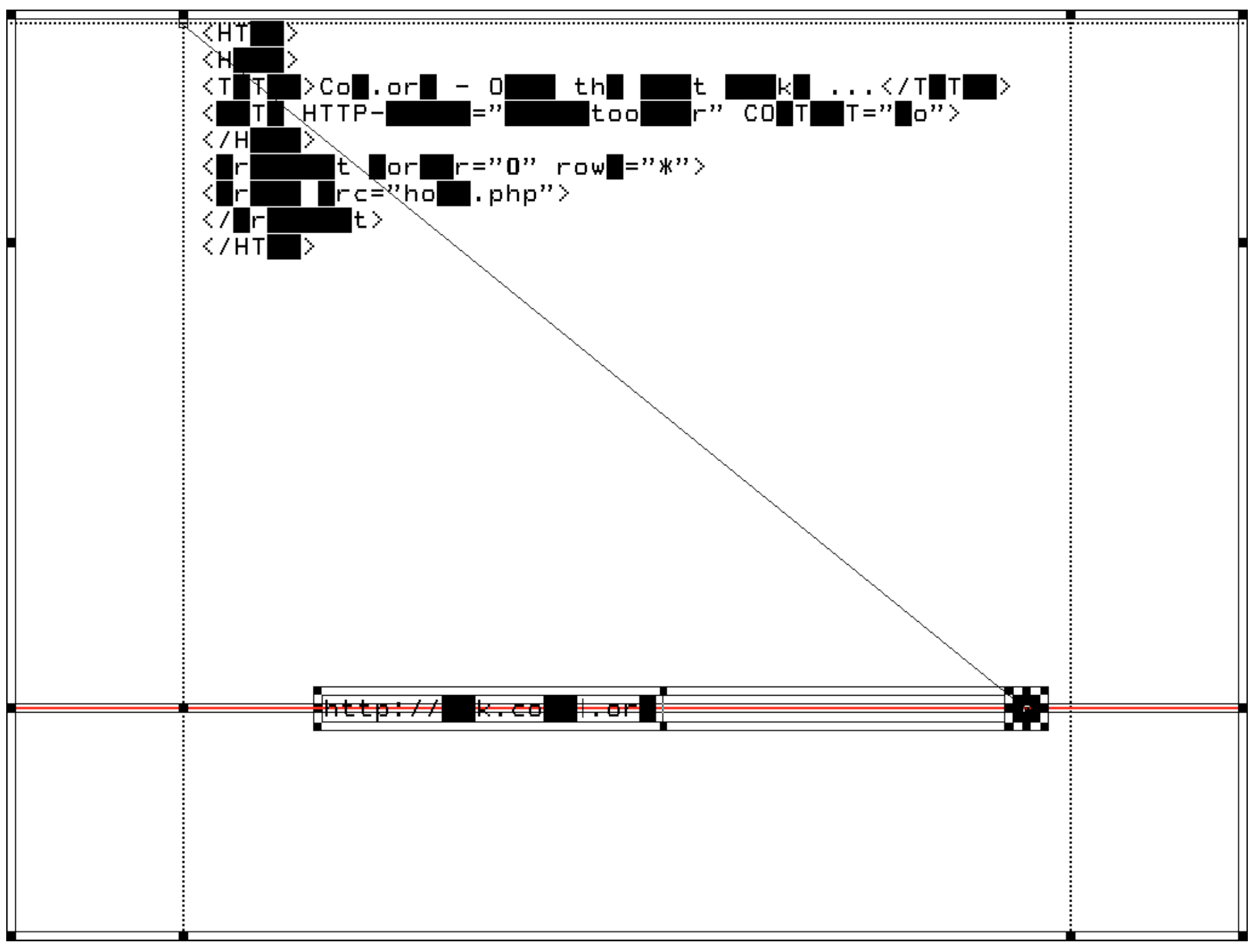
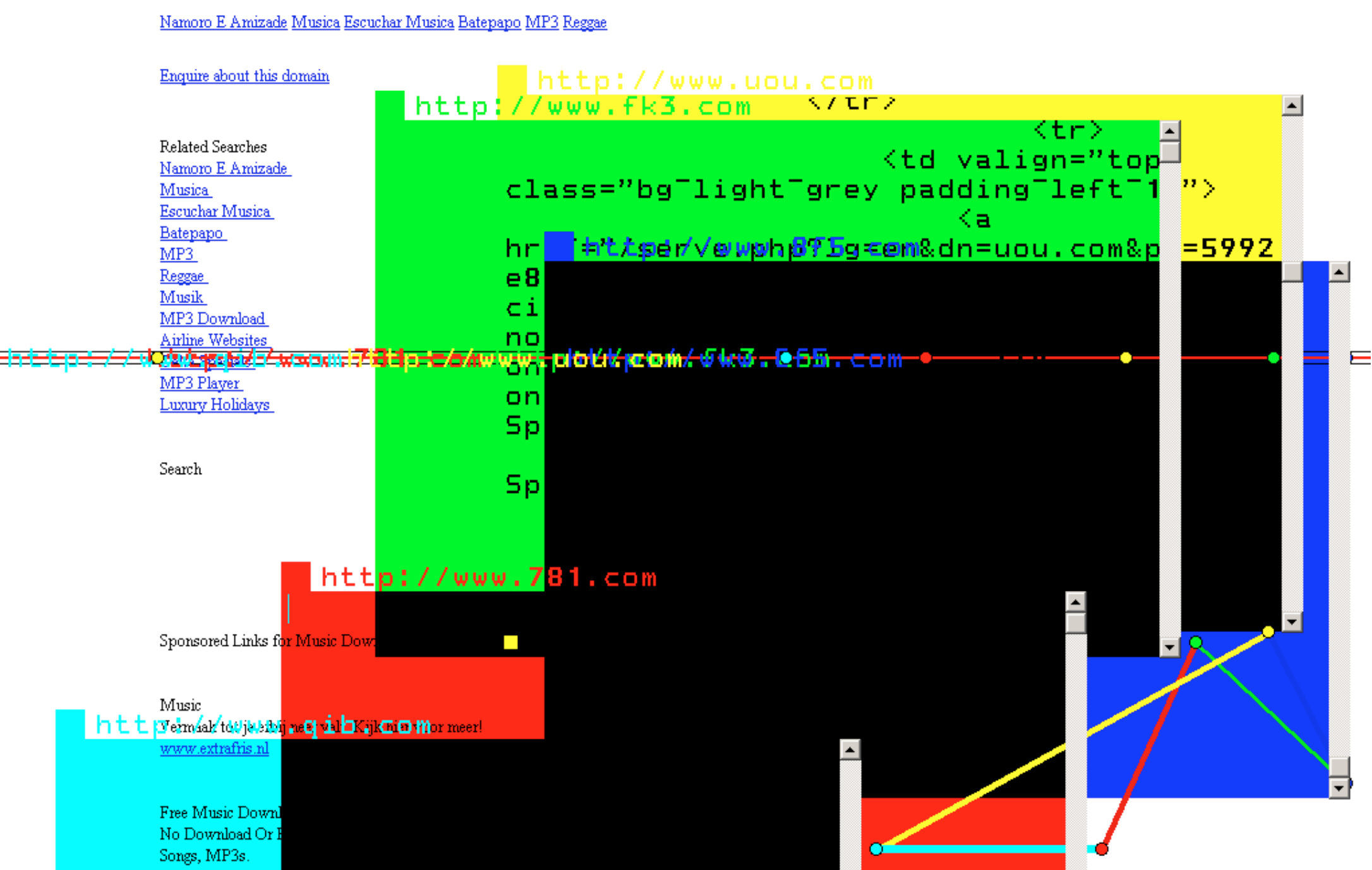
[ manifesto ]

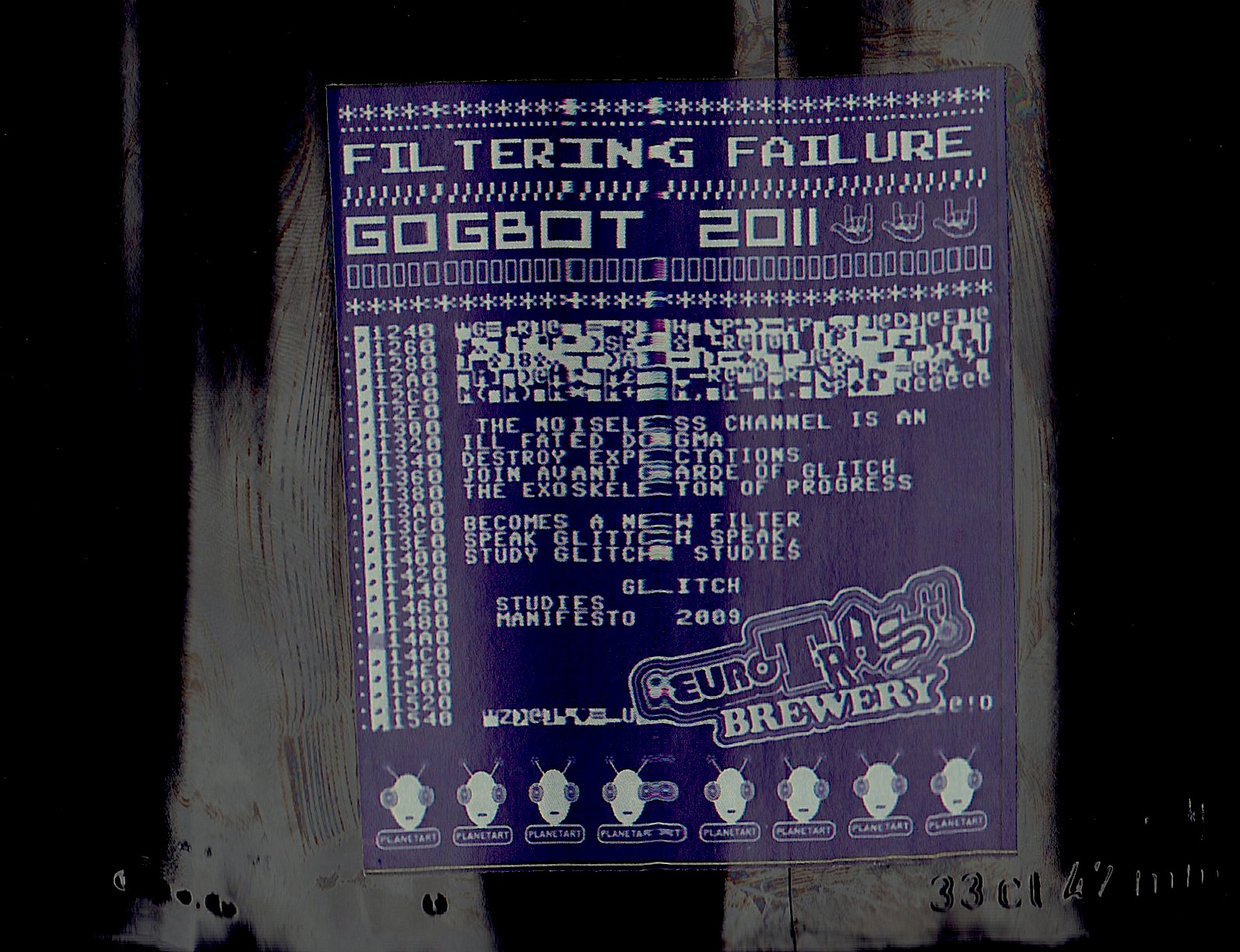 Filtering failure home brew by EuroTrash Brewery
Filtering failure home brew by EuroTrash Brewery
glitch:
Technological definition of glitch:
A short lived fault or break from an expected flow of operation within a digital system.
Glitch Art: The metaphorical, conceptual or Aesthetic use of technological glitches and other resolutions within the realm of art.
Technological definition of glitch:
A short lived fault or break from an expected flow of operation within a digital system.
Glitch Art: The metaphorical, conceptual or Aesthetic use of technological glitches and other resolutions within the realm of art.
Glitch Studies Manifesto (short version)
1. The dominant, continuing search for a noiseless channel has been – and will always be – no more than a regrettable, ill-fated dogma.
Acknowledge that although the constant search for complete transparency brings newer, ‘better’ media, every one of these improved techniques will always possess their own inherent fingerprints of imperfection.
2. Dispute the operating templates of creative practice; fight genres, interfaces and expectations!
Refuse to stay locked into one medium or between contradictions like real vs. virtual, obsolete vs. up-to-date, open vs. proprietary or digital vs. analog. Surf the vortex of technology, the in-between, the art of artifacts!
.
3. Get away from the established action scripts and join the avant-garde of the unknown. Become a nomad of noise artifacts!
The static, linear notion of information-transmission can be interrupted on three occasions: during encoding-decoding (compression), feedback or when a glitch (an unexpected break within the flow of technology) occurs. Noise artists must exploit these noise artifacts and explore the new opportunities they provide.
4. Employ bends and breaks as metaphors for différance. Use the glitch as an exoskeleton for progress.
Find catharsis in disintegration, ruptures and cracks; manipulate, bend and break any medium towards the point where it becomes something new; create glitch art.
5. Realize that the gospel of glitch art also reveals new standards implemented by corruption. Not all glitch art is progressive or something new.
The popularization and cultivation of the avant-garde of mishaps has become predestined and unavoidable. Be aware of easily reproducible glitch effects automated by softwares and plug-ins. What is now a glitch will become a fashion.
6. Force the audience to voyage through the Acousmatic Videoscape.
Create conceptually synaesthetic artworks, that exploit both visual and aural glitch (or other noise) artifacts at the same time. Employ these noise artifacts as a nebula that shroudsthe technology and its inner workings and that will compel an audience to listen and watch more exhaustively.
7. Rejoice in the critical trans-media aesthetics of glitch artifacts.
Utilize glitches to bring any medium in a critical state of hypertrophy, to (subsequently) criticize its inherent politics.
8. Employ Glitchspeak (as opposed to Newspeak) and study what is outside of knowledge. Glitch theory is what you can just get away with!
Flow cannot be understood without interruption, nor can function without (the possibility of) glitching. This is why glitch studies is necessary.
Longer versions:
︎old || ︎ new
︎ Polish translation by Bogumiła Piotrowska, Piotr Puldzian Płucienniczak, Aleksandra Pieńkosz
︎ Portuguese translation by Italo Dantas
︎ Turkish translation by Burak Ş. Çelik
︎ Persian translation by Nazila Karimi
︎ Spanish translation for Holobionte
︎ German translation (to come)
1. The dominant, continuing search for a noiseless channel has been – and will always be – no more than a regrettable, ill-fated dogma.
Acknowledge that although the constant search for complete transparency brings newer, ‘better’ media, every one of these improved techniques will always possess their own inherent fingerprints of imperfection.
2. Dispute the operating templates of creative practice; fight genres, interfaces and expectations!
Refuse to stay locked into one medium or between contradictions like real vs. virtual, obsolete vs. up-to-date, open vs. proprietary or digital vs. analog. Surf the vortex of technology, the in-between, the art of artifacts!
.
3. Get away from the established action scripts and join the avant-garde of the unknown. Become a nomad of noise artifacts!
The static, linear notion of information-transmission can be interrupted on three occasions: during encoding-decoding (compression), feedback or when a glitch (an unexpected break within the flow of technology) occurs. Noise artists must exploit these noise artifacts and explore the new opportunities they provide.
4. Employ bends and breaks as metaphors for différance. Use the glitch as an exoskeleton for progress.
Find catharsis in disintegration, ruptures and cracks; manipulate, bend and break any medium towards the point where it becomes something new; create glitch art.
5. Realize that the gospel of glitch art also reveals new standards implemented by corruption. Not all glitch art is progressive or something new.
The popularization and cultivation of the avant-garde of mishaps has become predestined and unavoidable. Be aware of easily reproducible glitch effects automated by softwares and plug-ins. What is now a glitch will become a fashion.
6. Force the audience to voyage through the Acousmatic Videoscape.
Create conceptually synaesthetic artworks, that exploit both visual and aural glitch (or other noise) artifacts at the same time. Employ these noise artifacts as a nebula that shroudsthe technology and its inner workings and that will compel an audience to listen and watch more exhaustively.
7. Rejoice in the critical trans-media aesthetics of glitch artifacts.
Utilize glitches to bring any medium in a critical state of hypertrophy, to (subsequently) criticize its inherent politics.
8. Employ Glitchspeak (as opposed to Newspeak) and study what is outside of knowledge. Glitch theory is what you can just get away with!
Flow cannot be understood without interruption, nor can function without (the possibility of) glitching. This is why glitch studies is necessary.
Longer versions:
︎old || ︎ new
︎ Polish translation by Bogumiła Piotrowska, Piotr Puldzian Płucienniczak, Aleksandra Pieńkosz
︎ Portuguese translation by Italo Dantas
︎ Turkish translation by Burak Ş. Çelik
︎ Persian translation by Nazila Karimi
︎ Spanish translation for Holobionte
︎ German translation (to come)
[ book ]
Glitch Moment/um (2011)
Published by the Institute of Network Cultures, December, 2011.
The Glitch Moment/um is the title of a small booklet I published in 2011. In the publication, I describe the moment of encountering a glitch as twofold:
First there is the moment the glitch happens, which is often experienced as an uncanny break of an expected technological flow or threatening loss of control. In this moment, the user or spectator doesn’t know what to expect next. This loss of control soon becomes a catalyst with a certain power as the glitch passes a tipping point. After its tipping point, the glitch is either understood as a failure, or as a development that forces new knowledge onto the user about their presumptions of the technology, or the technologies actual functioning. In case of the latter, the glitch can force the user to reconsider their habitual use of the technology.
After this experience of rupture, the glitch thus moves beyond its sublime momentum and vanishes into a realm of new conditions; it becomes a new mode - either technologically or aesthetically -, while its previous uncanny encounter is now an ephemeral, personal experience of a machine.
︎ From the INC Website
The Glitch Moment/um is the title of a small booklet I published in 2011. In the publication, I describe the moment of encountering a glitch as twofold:
First there is the moment the glitch happens, which is often experienced as an uncanny break of an expected technological flow or threatening loss of control. In this moment, the user or spectator doesn’t know what to expect next. This loss of control soon becomes a catalyst with a certain power as the glitch passes a tipping point. After its tipping point, the glitch is either understood as a failure, or as a development that forces new knowledge onto the user about their presumptions of the technology, or the technologies actual functioning. In case of the latter, the glitch can force the user to reconsider their habitual use of the technology.
After this experience of rupture, the glitch thus moves beyond its sublime momentum and vanishes into a realm of new conditions; it becomes a new mode - either technologically or aesthetically -, while its previous uncanny encounter is now an ephemeral, personal experience of a machine.
︎ From the INC Website
“Glitch culture organizes itself around the investigation and aestheticization of breaks in the conventional flow of information, or meaning within (digital) communication systems.
In this book, Rosa Menkman brings in early information theorists not usually encountered in glitch’s theoretical foundations to refine a signal and informational vocabulary appropriate to glitch’s technological moment/ums and orientations.”
Quadriptych of glitch curation
Between 2010 and 2014 I (co-)curated 4 group shows, dedicated to uncover and understand the many different strata that the realms of glitch art has developed into; from Filtering Failure (2010), focusing on the filtering out and the filtering for failure in the (digital) arts, to the establishment of the genre (Glitch Moment/ums, 2113) and it subsequent sub-genres and genealogies ((ᴳ̇̇̇̇̇̇̇̇̇̇̇̇̇̇̇̇̇̇̇̇̇litch) Art Genealogies, 2013). In Tactical ᴳ̇̇̇̇̇̇̇̇̇̇̇̇̇̇̇̇̇̇̇̇̇litches (2014) Nick Briz and I researched the tactical use of glitch.



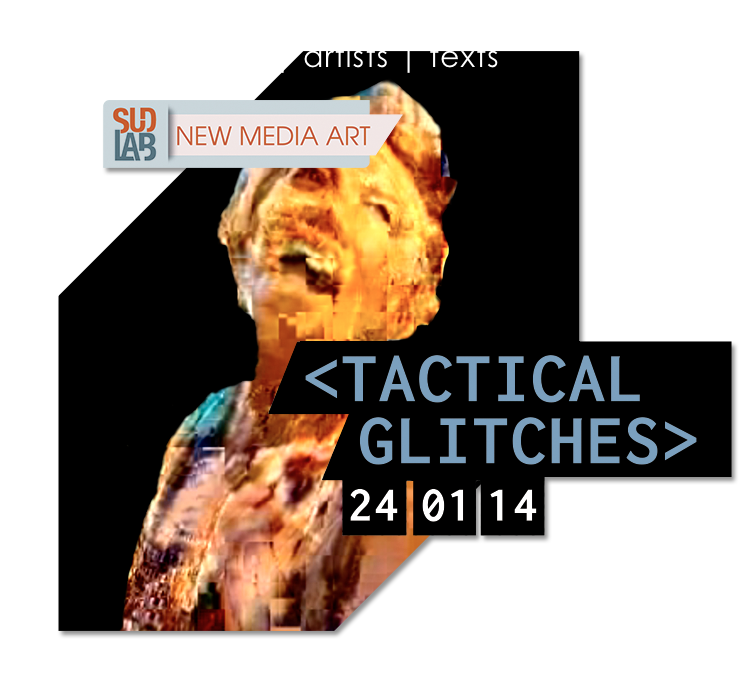
Filtering Failure
28 of February - 1st of April 2010
curated in collaboration with Julian van Aalderen
At Planetart, Amsterdam, Nl.
︎exhibition catalogue
︎Documentation: flickr
“Filtering Failure is about the changing roles of failure in (lo-fi) art. The exhibition aims to show the ambivalence of failure in art and is an ode to everything that can happen after the tipping point of failure - within the realm of pure and unpure, not yet completely commodified or what is understood as glitch art.
Some of the works on show in the exhibition are ironically standardized by repetition and as such exist as a compromise in-between what is ‘cool’ and what is ‘hot’.”
With:
ASDFG.org by Jodi (1998)
{} by Nullsleep (2011)
6 yrs of Currupt by Benjamin Gaulon (2005-2011)
Glitch: a new mode of textile design by Notendo
GlitchNes 2.0 by no-carrier (2009)
Bended video mixer by Karl Klomp (2009)
TBF1b by Gijs Gieskes (2011)
Codec by Paul Davis (2009)
QTzrk by Jon Satrom (2011)
Welcome to Videogramo by Videogramo (2009-2011)
28 of February - 1st of April 2010
curated in collaboration with Julian van Aalderen
At Planetart, Amsterdam, Nl.
︎exhibition catalogue
︎Documentation: flickr
“Filtering Failure is about the changing roles of failure in (lo-fi) art. The exhibition aims to show the ambivalence of failure in art and is an ode to everything that can happen after the tipping point of failure - within the realm of pure and unpure, not yet completely commodified or what is understood as glitch art.
Some of the works on show in the exhibition are ironically standardized by repetition and as such exist as a compromise in-between what is ‘cool’ and what is ‘hot’.”
With:
ASDFG.org by Jodi (1998)
{} by Nullsleep (2011)
6 yrs of Currupt by Benjamin Gaulon (2005-2011)
Glitch: a new mode of textile design by Notendo
GlitchNes 2.0 by no-carrier (2009)
Bended video mixer by Karl Klomp (2009)
TBF1b by Gijs Gieskes (2011)
Codec by Paul Davis (2009)
QTzrk by Jon Satrom (2011)
Welcome to Videogramo by Videogramo (2009-2011)
(ᴳ̇̇̇̇̇̇̇̇̇̇̇̇̇̇̇̇̇̇̇̇̇litch) Art Genealogies
19.03.2113 - 23.03.2113
curated in collaboration with LEAP (Daniel Franke, John McKiernan). At LEAP, Berli, De
︎exhibition catalogue
︎Documentation: Triangulation
︎Documentation: flickr
“Over the last 10 years, glitch, a perceived break from a flow in a technological system, has become a more and more popular subject matter in the (new) media arts. Today, Glitch Art is indeed so popular that theorists often feel the need to categorize and historicize the genre. Dada, Futurism and de Stijl are just a couple of historical Avant-Garde movements that have been used to delineate ‘the history’ of Glitch Art. But this teleological principle defies and confines glitch’ procedural and fragmented nature.
The exhibition (ᴳ̇̇̇̇̇̇̇̇̇̇̇̇̇̇̇̇̇̇̇̇̇litch) Art Genealogies does not focus on glitch art from a historically singular point of view, nor does it attempt to give an all encompassing historical or causal overview. Instead, (ᴳ̇̇̇̇̇̇̇̇̇̇̇̇̇̇̇̇̇̇̇̇̇̐litch) Art Genealogies recognizes the complexities and processes of glitch arts’ many affiliated, interconnected and (geo-)fragmented discourses: it tries to shine a light on why particular glitches develop social-political momentum in a specific point in time and how this momentum changes over time.
(ᴳ̐litch) Art Genealogies is an effort to show just five of the many threaded glitch discourses that play a role in the curators subjective understanding of glitch art at this present. In these threads, generations of different communities of (visual) glitch artists and their working methods, conceptual themes and politics are (inter)connected and/or juxtaposed.”
With (organised per cluster)
#NES circuitbending esthetic
The Punch-Out! Variations by noteNdo, (2007)
glitchNES by no_carrier, (2009)
#Enigmatic Realities
Max Miptex by Julian Oliver, (2001)
YPTOLM by Alex Myers, (2012)
RANDOM SEED by Rick Silva, (2013)
Psych and Seek by Kevin Carey, (2013)
LVLS by Nick Kegeyan, (2013)
nowhere? by Bryan Peterson, (2012)
#GUI Politics and Prose
OS Desktop from the My%Desktop, (2002-2010) series by JODI, (2009)
Plugin Beachball Success by jon.satrom, (2012)
Post_it_desktop_Feedback by miYö van Stenis, (2012)
spectrumcube by Emilio Gomariz, (2012)
#Psychedelia and New Psychedelia
AURAE by Sabrina Ratte, (2012)
Youth In Trouble - The Presets by Yoshi sodeoka, (2012)
gridSol_altar2 by A Bill Miller, (2012)
Sect 7 N-E by Anton Marini vs Rutt Etra, (2013)
skymappr by Brenna Murphy, (2012)
#Authorship // Openness
General Motors by Phil morton, (1970)
ᶀƦ⟲Ⱪ3ᥒ ⟒Ɍ3𐆖𐆖𐆖⟳ⱤĐƵ (AKA: Broken Records: Hystories i Of Noise && Dirty New Media by jonCates, (2011)
Apple Computersby Nick Briz, (2013)
19.03.2113 - 23.03.2113
curated in collaboration with LEAP (Daniel Franke, John McKiernan). At LEAP, Berli, De
︎exhibition catalogue
︎Documentation: Triangulation
︎Documentation: flickr
“Over the last 10 years, glitch, a perceived break from a flow in a technological system, has become a more and more popular subject matter in the (new) media arts. Today, Glitch Art is indeed so popular that theorists often feel the need to categorize and historicize the genre. Dada, Futurism and de Stijl are just a couple of historical Avant-Garde movements that have been used to delineate ‘the history’ of Glitch Art. But this teleological principle defies and confines glitch’ procedural and fragmented nature.
The exhibition (ᴳ̇̇̇̇̇̇̇̇̇̇̇̇̇̇̇̇̇̇̇̇̇litch) Art Genealogies does not focus on glitch art from a historically singular point of view, nor does it attempt to give an all encompassing historical or causal overview. Instead, (ᴳ̇̇̇̇̇̇̇̇̇̇̇̇̇̇̇̇̇̇̇̇̇̐litch) Art Genealogies recognizes the complexities and processes of glitch arts’ many affiliated, interconnected and (geo-)fragmented discourses: it tries to shine a light on why particular glitches develop social-political momentum in a specific point in time and how this momentum changes over time.
(ᴳ̐litch) Art Genealogies is an effort to show just five of the many threaded glitch discourses that play a role in the curators subjective understanding of glitch art at this present. In these threads, generations of different communities of (visual) glitch artists and their working methods, conceptual themes and politics are (inter)connected and/or juxtaposed.”
With (organised per cluster)
#NES circuitbending esthetic
The Punch-Out! Variations by noteNdo, (2007)
glitchNES by no_carrier, (2009)
#Enigmatic Realities
Max Miptex by Julian Oliver, (2001)
YPTOLM by Alex Myers, (2012)
RANDOM SEED by Rick Silva, (2013)
Psych and Seek by Kevin Carey, (2013)
LVLS by Nick Kegeyan, (2013)
nowhere? by Bryan Peterson, (2012)
#GUI Politics and Prose
OS Desktop from the My%Desktop, (2002-2010) series by JODI, (2009)
Plugin Beachball Success by jon.satrom, (2012)
Post_it_desktop_Feedback by miYö van Stenis, (2012)
spectrumcube by Emilio Gomariz, (2012)
#Psychedelia and New Psychedelia
AURAE by Sabrina Ratte, (2012)
Youth In Trouble - The Presets by Yoshi sodeoka, (2012)
gridSol_altar2 by A Bill Miller, (2012)
Sect 7 N-E by Anton Marini vs Rutt Etra, (2013)
skymappr by Brenna Murphy, (2012)
#Authorship // Openness
General Motors by Phil morton, (1970)
ᶀƦ⟲Ⱪ3ᥒ ⟒Ɍ3𐆖𐆖𐆖⟳ⱤĐƵ (AKA: Broken Records: Hystories i Of Noise && Dirty New Media by jonCates, (2011)
Apple Computersby Nick Briz, (2013)
Glitch Moment/ums
8 June - 28 July 2013
curated in collaboration with Furtherfield
At Furtherfield, London, Uk.
︎website
︎Documentation: We Make Money Not Art, Prosthetic Knowledge, flickr.
“To study glitch is to engage a study of the succeeding turns and changes of failure and functionality, revolutions and ossification. A movement also critiqued in Antonio Roberts work ‘What is Revolution?’.
My first encounter with a piece of glitch art came hand in hand with a feeling of shock. What had once been a first person shooter was now a broken, pixelated vortex of confusion (Jodi, Untitled Game, 2006). I was lost and in awe, trying to come to terms with an experience that seemed unforgivable. But finally, these ruins of expected functionality revealed a new opportunity, a spark of creative energy that showed that something new had taken shape. I felt questions emerge; what is this utterance, and how was it created? Is this perhaps ...a glitched video environment? But once I had named the glitch, the momentum -the glitch- was gone ...and in front of my eyes suddenly a new form had emerged.
These days I try to understand glitches as a manifold of moment/ums, having their meaning depend on time, discourse and context from which they are perceived. First, the glitch is a break from an expected flow within a (digital) system. Here, it is perceived as an absence of (expected) functionality and often experienced as an uncanny, threatening loss of control. This moment itself then can become a catalyst, with a certain momentum - a power that forces knowledge about actual and presumed media flow, onto the viewer. What was voided of meaning, becomes interpreted and gains new meaning.
But as I wrote in the catalogue for the (ᴳ̇̇̇̇̇̇̇̇̇̇̇̇̇̇̇̇̇̇̇̇̇litch) Art Genealogies exhibition I organized at LEAP Berlin earlier this year: [the meanings of] these glitches are constantly subject to revision: their language systems emerge, their meanings shift, idioms ossify and standardize into a fashion or genre.
...and then they change again.
The glitch thus heralds a transformative power - a potential to modulate or productively damage the norms of (techno-)culture.“
With:
Empty Spinning Circle become Full (part b) (2012) from the Further Abstract series by Alma Alloro
One Square in colors from the Further Abstract series by Alma Alloro (2012)
untitled [screencaptures] by Melissa Barron (2010)
The Glitch Codec Tutorial by Nick Briz (2011)
KindleGlitched by Benjamin Gaulon (2012)
Thoreau Glitch Portrait by José Irion Neto (2011)
Copyright Atrophy by Antonio Roberts (2013)
What Revolution? by Antonio Roberts (2011)
Beyond Yes and No by Ant Scott (2013)
0P3NR3P0
8 June - 28 July 2013
curated in collaboration with Furtherfield
At Furtherfield, London, Uk.
︎website
︎Documentation: We Make Money Not Art, Prosthetic Knowledge, flickr.
“To study glitch is to engage a study of the succeeding turns and changes of failure and functionality, revolutions and ossification. A movement also critiqued in Antonio Roberts work ‘What is Revolution?’.
My first encounter with a piece of glitch art came hand in hand with a feeling of shock. What had once been a first person shooter was now a broken, pixelated vortex of confusion (Jodi, Untitled Game, 2006). I was lost and in awe, trying to come to terms with an experience that seemed unforgivable. But finally, these ruins of expected functionality revealed a new opportunity, a spark of creative energy that showed that something new had taken shape. I felt questions emerge; what is this utterance, and how was it created? Is this perhaps ...a glitched video environment? But once I had named the glitch, the momentum -the glitch- was gone ...and in front of my eyes suddenly a new form had emerged.
These days I try to understand glitches as a manifold of moment/ums, having their meaning depend on time, discourse and context from which they are perceived. First, the glitch is a break from an expected flow within a (digital) system. Here, it is perceived as an absence of (expected) functionality and often experienced as an uncanny, threatening loss of control. This moment itself then can become a catalyst, with a certain momentum - a power that forces knowledge about actual and presumed media flow, onto the viewer. What was voided of meaning, becomes interpreted and gains new meaning.
But as I wrote in the catalogue for the (ᴳ̇̇̇̇̇̇̇̇̇̇̇̇̇̇̇̇̇̇̇̇̇litch) Art Genealogies exhibition I organized at LEAP Berlin earlier this year: [the meanings of] these glitches are constantly subject to revision: their language systems emerge, their meanings shift, idioms ossify and standardize into a fashion or genre.
...and then they change again.
The glitch thus heralds a transformative power - a potential to modulate or productively damage the norms of (techno-)culture.“
With:
Empty Spinning Circle become Full (part b) (2012) from the Further Abstract series by Alma Alloro
One Square in colors from the Further Abstract series by Alma Alloro (2012)
untitled [screencaptures] by Melissa Barron (2010)
The Glitch Codec Tutorial by Nick Briz (2011)
KindleGlitched by Benjamin Gaulon (2012)
Thoreau Glitch Portrait by José Irion Neto (2011)
Copyright Atrophy by Antonio Roberts (2013)
What Revolution? by Antonio Roberts (2011)
Beyond Yes and No by Ant Scott (2013)
0P3NR3P0
Tactical ᴳ̇̇̇̇̇̇̇̇̇̇̇̇̇̇̇̇̇̇̇̇̇litches
24 January - 24 Feb 2014
curated in collaboration with Nick Briz
At Sudlab, Portici, It
︎website
︎Facebook page
︎artist profiles
︎press release
︎Documentation: flickr, facebook, ref. material: Nick Briz on Tactical Glitch
“Technologies come with expectations, but these expectations aren’t always met. An mp3 might skip and crackle. A computer monitor might—for a moment—show shards instead of windows. A website might hickup on load and scramble its contents. When this happens, we call this unexpected occurrence a glitch. While these moments are rarely anticipated and usually unwelcome, they are at times intentionally provoked. The result of this intentional and creative instigation is what we often call GLITCH ART.”
With:
glitchr by Laimonas Zakas (2011) (LT)
Corrupted Miley Cyrus by Theo Darst (2010) (USA)
sOS by Pox Party (2011) (USA)
Glti.ch Karaoke (2014) (UK - ROK)
New Vulnerability (2012) UCNV (JP)
Ana Hui Zhang (CN)
Eleccion Guate by Sherpa (2011) (GT)
Corrupt.desktop (retail poisoning) by Benjamin Gaulon (2012) (FR)
A woman under the influence by Tatjiana Marusic (2002) (CH / DE / HR)
I see you by Nancy Mauro-Flude (2003) (AUS)
0P3NR3P0
24 January - 24 Feb 2014
curated in collaboration with Nick Briz
At Sudlab, Portici, It
︎website
︎Facebook page
︎artist profiles
︎press release
︎Documentation: flickr, facebook, ref. material: Nick Briz on Tactical Glitch
“Technologies come with expectations, but these expectations aren’t always met. An mp3 might skip and crackle. A computer monitor might—for a moment—show shards instead of windows. A website might hickup on load and scramble its contents. When this happens, we call this unexpected occurrence a glitch. While these moments are rarely anticipated and usually unwelcome, they are at times intentionally provoked. The result of this intentional and creative instigation is what we often call GLITCH ART.”
With:
glitchr by Laimonas Zakas (2011) (LT)
Corrupted Miley Cyrus by Theo Darst (2010) (USA)
sOS by Pox Party (2011) (USA)
Glti.ch Karaoke (2014) (UK - ROK)
New Vulnerability (2012) UCNV (JP)
Ana Hui Zhang (CN)
Eleccion Guate by Sherpa (2011) (GT)
Corrupt.desktop (retail poisoning) by Benjamin Gaulon (2012) (FR)
A woman under the influence by Tatjiana Marusic (2002) (CH / DE / HR)
I see you by Nancy Mauro-Flude (2003) (AUS)
0P3NR3P0








